Chelsea began in 1750 as a single estate, extending from what is now 28th Street south to 19th Street, and from the Hudson River east to Eighth Avenue. West Chelsea, the area bordering the Hudson River, became a massive warehousing district due to its proximity to Hudson River piers, freight yards and rail lines along Tenth and Eleventh Avenues. Now the piers have been converted to other uses and the last rail line was converted to The High Line park.
West Chelsea has a wide range of architectural styles. You’ll find modern landmarks such as the IAC Building (2007) and 100 Eleventh Avenue (2009) just seven blocks south of Starrett-Lehigh Building (1931) and Terminal Warehouse (1891).
(For NewYorkitecture.com’s purposes, we are defining West Chelsea as the area between W 28th Street and W 15th Street west of The High Line.)
Two massive full-block structures anchor the landmark district: Central Stores and Starrett-Lehigh Building. Outside the Landmarks Commission district – but certainly modern landmarks – are the IAC Building and neighboring 100 Eleventh Avenue.
Central Stores, Terminal Warehouse Company is actually 25 separate buildings between W 27th and W 28th Streets, from Eleventh to Twelfth Avenue. At one time, railroad tracks ran through the building, allowing transfer and storage of freight to/from trains. Modern-day uses included the Tunnel nightclub (see http://en.wikipedia.org/wiki/Tunnel_%28New_York_nightclub%29). Galleries, exhibits and events are now under development.
Just across W 27th Street, neighboring Starrett-Lehigh Building is a massive warehouse and office complex. Like Terminal Warehouse, Starrett-Lehigh was built to accommodate freight trains on its ground floor (previously the location of Lehigh Valley Railroad freight yards.) See http://en.wikipedia.org/wiki/Starrett-Lehigh_Building for more details.
The headquarters of InterActive Corp. (Eleventh Avenue from W 18th to W 19th Street) was designed by modern-day “starchitect” Frank Gehry. The massive glass “sails” were described by Vanity Fair as perhaps the world’s most attractive office building. But you can’t please everyone: “AIA Guide to New York City” sniffs, “Much has been made of Gehry’s use of the computer to transform the instant gesture into architecture, but here the gesture is static.” Wikipedia’s brief entry: http://en.wikipedia.org/wiki/IAC_Building.
Next-door-neighbor 100 Eleventh Avenue uses layer upon layer of glass, set in steel frames – each frame different – to achieve its memorable mosaic façade. The luxury condominium apartment tower was completed in 2009. See the owner’s website: http://nouvelchelsea.com/architecture.php and the City Realty article: http://www.cityrealty.com/nyc/chelsea/100-eleventh-avenue/37641.
West Chelsea Recommended Reading
- Wikipedia: http://en.wikipedia.org/wiki/Chelsea,_Manhattan
- West Chelsea Historic District map: http://www.nyc.gov/html/lpc/downloads/pdf/maps/WestChelseaHD.pdf
- West Chelsea Historic District – Designation Report: http://www.nyc.gov/html/lpc/downloads/pdf/reports/WestChelsea_REPORT.pdf
Also see High Line Park gallery.

![IMG_4069_70_71Adjust [3/11/2012 12:47:39 PM] IMG_4069_70_71Adjust [3/11/2012 12:47:39 PM]](https://www.newyorkitecture.com/wp-content/gallery/west-chelsea/img_4069_70_71adjust.jpg)
![IMG_4144_5_6Adjust [3/11/2012 1:10:27 PM] IMG_4144_5_6Adjust [3/11/2012 1:10:27 PM]](https://www.newyorkitecture.com/wp-content/gallery/west-chelsea/img_4144_5_6adjust.jpg)
![IMG_4138_39_40Adjust [3/11/2012 1:09:00 PM] IMG_4138_39_40Adjust [3/11/2012 1:09:00 PM]](https://www.newyorkitecture.com/wp-content/gallery/west-chelsea/img_4138_39_40adjust.jpg)
![IMG_4126_7_8Adjust [3/11/2012 1:06:43 PM] IMG_4126_7_8Adjust [3/11/2012 1:06:43 PM]](https://www.newyorkitecture.com/wp-content/gallery/west-chelsea/img_4126_7_8adjust.jpg)
![IMG_4108_09_10Adjust [3/11/2012 1:01:29 PM] IMG_4108_09_10Adjust [3/11/2012 1:01:29 PM]](https://www.newyorkitecture.com/wp-content/gallery/west-chelsea/img_4108_09_10adjust.jpg)
![IMG_4105_6_7Adjust [3/11/2012 1:00:48 PM] IMG_4105_6_7Adjust [3/11/2012 1:00:48 PM]](https://www.newyorkitecture.com/wp-content/gallery/west-chelsea/img_4105_6_7adjust.jpg)
![IMG_4096_7_8Adjust [3/11/2012 12:56:50 PM] IMG_4096_7_8Adjust [3/11/2012 12:56:50 PM]](https://www.newyorkitecture.com/wp-content/gallery/west-chelsea/img_4096_7_8adjust.jpg)
![IMG_4090_1_2Adjust [3/11/2012 12:54:47 PM] IMG_4090_1_2Adjust [3/11/2012 12:54:47 PM]](https://www.newyorkitecture.com/wp-content/gallery/west-chelsea/img_4090_1_2adjust.jpg)
![IMG_4075_6_7Adjust [3/11/2012 12:49:32 PM] IMG_4075_6_7Adjust [3/11/2012 12:49:32 PM]](https://www.newyorkitecture.com/wp-content/gallery/west-chelsea/img_4075_6_7adjust.jpg)
![IMG_4156_7_8Adjust [3/11/2012 1:13:58 PM] IMG_4156_7_8Adjust [3/11/2012 1:13:58 PM]](https://www.newyorkitecture.com/wp-content/gallery/west-chelsea/img_4156_7_8adjust.jpg)
![IMG_4063_4_5Adjust [3/11/2012 12:45:33 PM] IMG_4063_4_5Adjust [3/11/2012 12:45:33 PM]](https://www.newyorkitecture.com/wp-content/gallery/west-chelsea/img_4063_4_5adjust.jpg)
![IMG_4054_5_6Adjust [3/11/2012 12:42:24 PM] IMG_4054_5_6Adjust [3/11/2012 12:42:24 PM]](https://www.newyorkitecture.com/wp-content/gallery/west-chelsea/img_4054_5_6adjust.jpg)
![IMG_4042_3_4Adjust [3/11/2012 12:40:21 PM] IMG_4042_3_4Adjust [3/11/2012 12:40:21 PM]](https://www.newyorkitecture.com/wp-content/gallery/west-chelsea/img_4042_3_4adjust.jpg)
![IMG_4036_7_8Adjust [3/11/2012 12:38:37 PM] IMG_4036_7_8Adjust [3/11/2012 12:38:37 PM]](https://www.newyorkitecture.com/wp-content/gallery/west-chelsea/img_4036_7_8adjust.jpg)
![IMG_4018_19_20Adjust [3/11/2012 12:36:15 PM] IMG_4018_19_20Adjust [3/11/2012 12:36:15 PM]](https://www.newyorkitecture.com/wp-content/gallery/west-chelsea/img_4018_19_20adjust.jpg)
![IMG_4009_10_11Adjust [3/11/2012 12:30:10 PM] IMG_4009_10_11Adjust [3/11/2012 12:30:10 PM]](https://www.newyorkitecture.com/wp-content/gallery/west-chelsea/img_4009_10_11adjust.jpg)
![IMG_3994_5_6Adjust [3/11/2012 12:24:13 PM] IMG_3994_5_6Adjust [3/11/2012 12:24:13 PM]](https://www.newyorkitecture.com/wp-content/gallery/west-chelsea/img_3994_5_6adjust.jpg)
![IMG_3982_3_4Adjust [3/11/2012 12:16:42 PM] IMG_3982_3_4Adjust [3/11/2012 12:16:42 PM]](https://www.newyorkitecture.com/wp-content/gallery/west-chelsea/img_3982_3_4adjust.jpg)
![IMG_4168_69_70Adjust [3/11/2012 1:18:50 PM] IMG_4168_69_70Adjust [3/11/2012 1:18:50 PM]](https://www.newyorkitecture.com/wp-content/gallery/west-chelsea/img_4168_69_70adjust.jpg)
![IMG_4183_4_5Adjust [3/11/2012 1:21:32 PM] IMG_4183_4_5Adjust [3/11/2012 1:21:32 PM]](https://www.newyorkitecture.com/wp-content/gallery/west-chelsea/img_4183_4_5adjust.jpg)
![IMG_4198_199_200Adjust [3/11/2012 1:26:13 PM] IMG_4198_199_200Adjust [3/11/2012 1:26:13 PM]](https://www.newyorkitecture.com/wp-content/gallery/west-chelsea/img_4198_199_200adjust.jpg)
![IMG_4207_8_9Adjust [3/11/2012 1:28:16 PM] IMG_4207_8_9Adjust [3/11/2012 1:28:16 PM]](https://www.newyorkitecture.com/wp-content/gallery/west-chelsea/img_4207_8_9adjust.jpg)
![IMG_4222_3_4Adjust [3/11/2012 1:30:39 PM] IMG_4222_3_4Adjust [3/11/2012 1:30:39 PM]](https://www.newyorkitecture.com/wp-content/gallery/west-chelsea/img_4222_3_4adjust.jpg)
![IMG_4234_5_6Adjust [3/11/2012 1:35:42 PM] IMG_4234_5_6Adjust [3/11/2012 1:35:42 PM]](https://www.newyorkitecture.com/wp-content/gallery/west-chelsea/img_4234_5_6adjust.jpg)
![IMG_4243_4_5Adjust [3/11/2012 1:38:43 PM] IMG_4243_4_5Adjust [3/11/2012 1:38:43 PM]](https://www.newyorkitecture.com/wp-content/gallery/west-chelsea/img_4243_4_5adjust.jpg)
![IMG_4255_6_7Adjust [3/11/2012 1:41:34 PM] IMG_4255_6_7Adjust [3/11/2012 1:41:34 PM]](https://www.newyorkitecture.com/wp-content/gallery/west-chelsea/img_4255_6_7adjust.jpg)
![IMG_4282_3_4Adjust [3/11/2012 1:56:40 PM] IMG_4282_3_4Adjust [3/11/2012 1:56:40 PM]](https://www.newyorkitecture.com/wp-content/gallery/west-chelsea/img_4282_3_4adjust.jpg)
![IMG_4300_1_2Adjust [3/11/2012 2:01:23 PM] IMG_4300_1_2Adjust [3/11/2012 2:01:23 PM]](https://www.newyorkitecture.com/wp-content/gallery/west-chelsea/img_4300_1_2adjust.jpg)
![IMG_4303_4_5Adjust [3/11/2012 2:02:40 PM] IMG_4303_4_5Adjust [3/11/2012 2:02:40 PM]](https://www.newyorkitecture.com/wp-content/gallery/west-chelsea/img_4303_4_5adjust.jpg)
![IMG_4309_10_11Adjust [3/11/2012 2:04:46 PM] IMG_4309_10_11Adjust [3/11/2012 2:04:46 PM]](https://www.newyorkitecture.com/wp-content/gallery/west-chelsea/img_4309_10_11adjust.jpg)
![IMG_4438_39_40Adjust [3/11/2012 2:46:01 PM] IMG_4438_39_40Adjust [3/11/2012 2:46:01 PM]](https://www.newyorkitecture.com/wp-content/gallery/west-chelsea/img_4438_39_40adjust.jpg)
![IMG_4450_1_2Adjust [3/11/2012 2:47:32 PM] IMG_4450_1_2Adjust [3/11/2012 2:47:32 PM]](https://www.newyorkitecture.com/wp-content/gallery/west-chelsea/img_4450_1_2adjust.jpg)
![IMG_4507_8_9Adjust [3/11/2012 3:05:08 PM] IMG_4507_8_9Adjust [3/11/2012 3:05:08 PM]](https://www.newyorkitecture.com/wp-content/gallery/west-chelsea/img_4507_8_9adjust.jpg)
![IMG_2470_1_2Adjust [3/6/2012 12:47:42 PM] IMG_2470_1_2Adjust [3/6/2012 12:47:42 PM]](https://www.newyorkitecture.com/wp-content/gallery/west-chelsea/img_2470_1_2adjust.jpg)
![IMG_2638_39_40Adjust [3/6/2012 1:54:13 PM] IMG_2638_39_40Adjust [3/6/2012 1:54:13 PM]](https://www.newyorkitecture.com/wp-content/gallery/west-chelsea/img_2638_39_40adjust.jpg)
![IMG_2629_30_31Adjust [3/6/2012 1:49:08 PM] IMG_2629_30_31Adjust [3/6/2012 1:49:08 PM]](https://www.newyorkitecture.com/wp-content/gallery/west-chelsea/img_2629_30_31adjust.jpg)
![IMG_2506_7_8Adjust [3/6/2012 1:02:08 PM] IMG_2506_7_8Adjust [3/6/2012 1:02:08 PM]](https://www.newyorkitecture.com/wp-content/gallery/west-chelsea/img_2506_7_8adjust.jpg)
![IMG_2491_2_3Adjust [3/6/2012 12:54:09 PM] IMG_2491_2_3Adjust [3/6/2012 12:54:09 PM]](https://www.newyorkitecture.com/wp-content/gallery/west-chelsea/img_2491_2_3adjust.jpg)
![IMG_2488_89_90Adjust [3/6/2012 12:52:19 PM] IMG_2488_89_90Adjust [3/6/2012 12:52:19 PM]](https://www.newyorkitecture.com/wp-content/gallery/west-chelsea/img_2488_89_90adjust.jpg)
![IMG_2479_80_81Adjust [3/6/2012 12:50:01 PM] IMG_2479_80_81Adjust [3/6/2012 12:50:01 PM]](https://www.newyorkitecture.com/wp-content/gallery/west-chelsea/img_2479_80_81adjust.jpg)
![IMG_2476_7_8Adjust [3/6/2012 12:49:22 PM] IMG_2476_7_8Adjust [3/6/2012 12:49:22 PM]](https://www.newyorkitecture.com/wp-content/gallery/west-chelsea/img_2476_7_8adjust.jpg)
![IMG_2473_4_5Adjust [3/6/2012 12:48:20 PM] IMG_2473_4_5Adjust [3/6/2012 12:48:20 PM]](https://www.newyorkitecture.com/wp-content/gallery/west-chelsea/img_2473_4_5adjust.jpg)
![IMG_2641_2_3Adjust [3/6/2012 1:54:39 PM] IMG_2641_2_3Adjust [3/6/2012 1:54:39 PM]](https://www.newyorkitecture.com/wp-content/gallery/west-chelsea/img_2641_2_3adjust.jpg)
![IMG_2458_59_60Adjust [3/6/2012 12:41:55 PM] IMG_2458_59_60Adjust [3/6/2012 12:41:55 PM]](https://www.newyorkitecture.com/wp-content/gallery/west-chelsea/img_2458_59_60adjust.jpg)
![IMG_2452_3_4Adjust [3/6/2012 12:40:20 PM] IMG_2452_3_4Adjust [3/6/2012 12:40:20 PM]](https://www.newyorkitecture.com/wp-content/gallery/west-chelsea/img_2452_3_4adjust.jpg)
![IMG_2449_50_51Adjust [3/6/2012 12:38:17 PM] IMG_2449_50_51Adjust [3/6/2012 12:38:17 PM]](https://www.newyorkitecture.com/wp-content/gallery/west-chelsea/img_2449_50_51adjust.jpg)
![IMG_2431_2_3Adjust [3/6/2012 12:34:47 PM] IMG_2431_2_3Adjust [3/6/2012 12:34:47 PM]](https://www.newyorkitecture.com/wp-content/gallery/west-chelsea/img_2431_2_3adjust.jpg)
![IMG_2425_6_7Adjust [3/6/2012 12:32:21 PM] IMG_2425_6_7Adjust [3/6/2012 12:32:21 PM]](https://www.newyorkitecture.com/wp-content/gallery/west-chelsea/img_2425_6_7adjust.jpg)
![IMG_2410_1_2Adjust [3/6/2012 12:28:24 PM] IMG_2410_1_2Adjust [3/6/2012 12:28:24 PM]](https://www.newyorkitecture.com/wp-content/gallery/west-chelsea/img_2410_1_2adjust.jpg)
![IMG_2404_5_6Adjust [3/6/2012 12:26:21 PM] IMG_2404_5_6Adjust [3/6/2012 12:26:21 PM]](https://www.newyorkitecture.com/wp-content/gallery/west-chelsea/img_2404_5_6adjust.jpg)

![IMG_2650_1_2Adjust [3/6/2012 1:58:10 PM] IMG_2650_1_2Adjust [3/6/2012 1:58:10 PM]](https://www.newyorkitecture.com/wp-content/gallery/west-chelsea/img_2650_1_2adjust.jpg)
![IMG_2659_60_61Adjust [3/6/2012 2:00:11 PM] IMG_2659_60_61Adjust [3/6/2012 2:00:11 PM]](https://www.newyorkitecture.com/wp-content/gallery/west-chelsea/img_2659_60_61adjust.jpg)
![IMG_2713_4_5Adjust [3/6/2012 2:23:25 PM] IMG_2713_4_5Adjust [3/6/2012 2:23:25 PM]](https://www.newyorkitecture.com/wp-content/gallery/west-chelsea/img_2713_4_5adjust.jpg)
![IMG_2740_1_2Adjust [3/6/2012 2:35:22 PM] IMG_2740_1_2Adjust [3/6/2012 2:35:22 PM]](https://www.newyorkitecture.com/wp-content/gallery/west-chelsea/img_2740_1_2adjust.jpg)
![IMG_3904_5_6Adjust [3/11/2012 11:40:07 AM] IMG_3904_5_6Adjust [3/11/2012 11:40:07 AM]](https://www.newyorkitecture.com/wp-content/gallery/west-chelsea/img_3904_5_6adjust.jpg)
![IMG_3910_1_2Adjust [3/11/2012 11:43:07 AM] IMG_3910_1_2Adjust [3/11/2012 11:43:07 AM]](https://www.newyorkitecture.com/wp-content/gallery/west-chelsea/img_3910_1_2adjust.jpg)
![IMG_3916_7_8Adjust [3/11/2012 11:45:44 AM] IMG_3916_7_8Adjust [3/11/2012 11:45:44 AM]](https://www.newyorkitecture.com/wp-content/gallery/west-chelsea/img_3916_7_8adjust.jpg)
![IMG_3922_3_4Adjust [3/11/2012 11:46:42 AM] IMG_3922_3_4Adjust [3/11/2012 11:46:42 AM]](https://www.newyorkitecture.com/wp-content/gallery/west-chelsea/img_3922_3_4adjust.jpg)
![IMG_3928_29_30Adjust [3/11/2012 11:50:21 AM] IMG_3928_29_30Adjust [3/11/2012 11:50:21 AM]](https://www.newyorkitecture.com/wp-content/gallery/west-chelsea/img_3928_29_30adjust.jpg)
![IMG_3934_5_6Adjust [3/11/2012 11:51:26 AM] IMG_3934_5_6Adjust [3/11/2012 11:51:26 AM]](https://www.newyorkitecture.com/wp-content/gallery/west-chelsea/img_3934_5_6adjust.jpg)
![IMG_3937_8_9Adjust [3/11/2012 11:56:09 AM] IMG_3937_8_9Adjust [3/11/2012 11:56:09 AM]](https://www.newyorkitecture.com/wp-content/gallery/west-chelsea/img_3937_8_9adjust.jpg)
![IMG_3943_4_5Adjust [3/11/2012 12:02:44 PM] IMG_3943_4_5Adjust [3/11/2012 12:02:44 PM]](https://www.newyorkitecture.com/wp-content/gallery/west-chelsea/img_3943_4_5adjust.jpg)
![IMG_3946_7_8Adjust [3/11/2012 12:04:26 PM] IMG_3946_7_8Adjust [3/11/2012 12:04:26 PM]](https://www.newyorkitecture.com/wp-content/gallery/west-chelsea/img_3946_7_8adjust.jpg)
![IMG_3955_6_7Adjust [3/11/2012 12:06:45 PM] IMG_3955_6_7Adjust [3/11/2012 12:06:45 PM]](https://www.newyorkitecture.com/wp-content/gallery/west-chelsea/img_3955_6_7adjust.jpg)
![IMG_3958_59_60Adjust [3/11/2012 12:11:02 PM] IMG_3958_59_60Adjust [3/11/2012 12:11:02 PM]](https://www.newyorkitecture.com/wp-content/gallery/west-chelsea/img_3958_59_60adjust.jpg)

![[Downtown Brooklyn] IMG_6283_4_5Adjust [4/3/2012 9:29:11 AM] [Downtown Brooklyn] IMG_6283_4_5Adjust [4/3/2012 9:29:11 AM]](https://www.newyorkitecture.com/wp-content/gallery/downtown-brooklyn-civic-center/a01_6283_4_5adjust.jpg)
![[Downtown Brooklyn] IMG_6310_1_2Adjust [4/3/2012 9:37:52 AM] [Downtown Brooklyn] IMG_6310_1_2Adjust [4/3/2012 9:37:52 AM]](https://www.newyorkitecture.com/wp-content/gallery/downtown-brooklyn-civic-center/a02_6310_1_2adjust.jpg)
![[Downtown Brooklyn] IMG_6316_7_8Adjust [4/3/2012 9:39:26 AM] [Downtown Brooklyn] IMG_6316_7_8Adjust [4/3/2012 9:39:26 AM]](https://www.newyorkitecture.com/wp-content/gallery/downtown-brooklyn-civic-center/a03_6316_7_8adjust.jpg)
![[Downtown Brooklyn] IMG_6328_29_30Adjust [4/3/2012 9:46:04 AM] [Downtown Brooklyn] IMG_6328_29_30Adjust [4/3/2012 9:46:04 AM]](https://www.newyorkitecture.com/wp-content/gallery/downtown-brooklyn-civic-center/a04_6328_29_30adjust.jpg)
![[Downtown Brooklyn] IMG_6334_5_6Adjust [4/3/2012 9:48:01 AM] [Downtown Brooklyn] IMG_6334_5_6Adjust [4/3/2012 9:48:01 AM]](https://www.newyorkitecture.com/wp-content/gallery/downtown-brooklyn-civic-center/a05_6334_5_6adjust.jpg)
![[Downtown Brooklyn] IMG_6343_4_5Adjust [4/3/2012 9:51:30 AM] [Downtown Brooklyn] IMG_6343_4_5Adjust [4/3/2012 9:51:30 AM]](https://www.newyorkitecture.com/wp-content/gallery/downtown-brooklyn-civic-center/a06_6343_4_5adjust.jpg)
![[Downtown Brooklyn] IMG_6358_59_60Adjust [4/3/2012 9:56:29 AM] [Downtown Brooklyn] IMG_6358_59_60Adjust [4/3/2012 9:56:29 AM]](https://www.newyorkitecture.com/wp-content/gallery/downtown-brooklyn-civic-center/a07_6358_59_60adjust.jpg)
![[Downtown Brooklyn] IMG_6364_5_6Adjust [4/3/2012 9:58:11 AM] [Downtown Brooklyn] IMG_6364_5_6Adjust [4/3/2012 9:58:11 AM]](https://www.newyorkitecture.com/wp-content/gallery/downtown-brooklyn-civic-center/a08_6364_5_6adjust.jpg)
![[Downtown Brooklyn] IMG_6367_8_9Adjust [4/3/2012 10:00:09 AM] [Downtown Brooklyn] IMG_6367_8_9Adjust [4/3/2012 10:00:09 AM]](https://www.newyorkitecture.com/wp-content/gallery/downtown-brooklyn-civic-center/a09_6367_8_9adjust.jpg)
![[Downtown Brooklyn] IMG_6352_3_4Adjust [4/3/2012 9:53:11 AM] [Downtown Brooklyn] IMG_6352_3_4Adjust [4/3/2012 9:53:11 AM]](https://www.newyorkitecture.com/wp-content/gallery/downtown-brooklyn-civic-center/a10_6352_3_4adjust.jpg)
![[Downtown Brooklyn] IMG_8020_1_2Adjust [4/5/2012 9:30:19 AM] [Downtown Brooklyn] IMG_8020_1_2Adjust [4/5/2012 9:30:19 AM]](https://www.newyorkitecture.com/wp-content/gallery/downtown-brooklyn-civic-center/a11_8020_1_2adjust.jpg)
![[Downtown Brooklyn] IMG_8026_7_8Adjust [4/5/2012 9:33:46 AM] [Downtown Brooklyn] IMG_8026_7_8Adjust [4/5/2012 9:33:46 AM]](https://www.newyorkitecture.com/wp-content/gallery/downtown-brooklyn-civic-center/a12_8026_7_8adjust.jpg)
![[Downtown Brooklyn] IMG_8038_39_40Adjust [4/5/2012 9:35:34 AM] [Downtown Brooklyn] IMG_8038_39_40Adjust [4/5/2012 9:35:34 AM]](https://www.newyorkitecture.com/wp-content/gallery/downtown-brooklyn-civic-center/a13_8038_39_40adjust.jpg)
![[Downtown Brooklyn] IMG_6373_4_5Adjust [4/3/2012 10:05:29 AM] [Downtown Brooklyn] IMG_6373_4_5Adjust [4/3/2012 10:05:29 AM]](https://www.newyorkitecture.com/wp-content/gallery/downtown-brooklyn-civic-center/a14_6373_4_5adjust.jpg)
![[Downtown Brooklyn] IMG_6379_80_81Adjust [4/3/2012 10:06:17 AM] [Downtown Brooklyn] IMG_6379_80_81Adjust [4/3/2012 10:06:17 AM]](https://www.newyorkitecture.com/wp-content/gallery/downtown-brooklyn-civic-center/a15_6379_80_81adjust.jpg)
![[Downtown Brooklyn] IMG_8059_60_61Adjust [4/5/2012 9:38:25 AM] [Downtown Brooklyn] IMG_8059_60_61Adjust [4/5/2012 9:38:25 AM]](https://www.newyorkitecture.com/wp-content/gallery/downtown-brooklyn-civic-center/a16_8059_60_61adjust.jpg)
![[Downtown Brooklyn] IMG_8098_099_100Adjust [4/5/2012 9:50:02 AM] [Downtown Brooklyn] IMG_8098_099_100Adjust [4/5/2012 9:50:02 AM]](https://www.newyorkitecture.com/wp-content/gallery/downtown-brooklyn-civic-center/a17_8098_099_100adjust.jpg)
![[Downtown Brooklyn] IMG_6298_299_300Adjust [4/3/2012 9:33:17 AM] [Downtown Brooklyn] IMG_6298_299_300Adjust [4/3/2012 9:33:17 AM]](https://www.newyorkitecture.com/wp-content/gallery/downtown-brooklyn-civic-center/b_6298_299_300adjust.jpg)
![[Downtown Brooklyn] IMG_7984_5_6Adjust [4/5/2012 9:20:04 AM] [Downtown Brooklyn] IMG_7984_5_6Adjust [4/5/2012 9:20:04 AM]](https://www.newyorkitecture.com/wp-content/gallery/downtown-brooklyn-civic-center/b_7984_5_6adjust.jpg)
![[Downtown Brooklyn] IMG_7990_1_2Adjust [4/5/2012 9:21:34 AM] [Downtown Brooklyn] IMG_7990_1_2Adjust [4/5/2012 9:21:34 AM]](https://www.newyorkitecture.com/wp-content/gallery/downtown-brooklyn-civic-center/b_7990_1_2adjust.jpg)
![[Downtown Brooklyn] IMG_6382_3_4Adjust [4/3/2012 10:07:33 AM] [Downtown Brooklyn] IMG_6382_3_4Adjust [4/3/2012 10:07:33 AM]](https://www.newyorkitecture.com/wp-content/gallery/downtown-brooklyn-civic-center/c01_6382_3_4adjust.jpg)
![[Downtown Brooklyn] IMG_8104_5_6Adjust [4/5/2012 9:54:56 AM] [Downtown Brooklyn] IMG_8104_5_6Adjust [4/5/2012 9:54:56 AM]](https://www.newyorkitecture.com/wp-content/gallery/downtown-brooklyn-civic-center/c01a_8104_5_6adjust.jpg)
![[Downtown Brooklyn] IMG_6421_2_3Adjust [4/3/2012 10:19:08 AM] [Downtown Brooklyn] IMG_6421_2_3Adjust [4/3/2012 10:19:08 AM]](https://www.newyorkitecture.com/wp-content/gallery/downtown-brooklyn-civic-center/c02_6421_2_3adjust.jpg)
![[Downtown Brooklyn] IMG_8008_09_10Adjust [4/5/2012 9:27:58 AM] [Downtown Brooklyn] IMG_8008_09_10Adjust [4/5/2012 9:27:58 AM]](https://www.newyorkitecture.com/wp-content/gallery/downtown-brooklyn-civic-center/c02a_8008_09_10adjust.jpg)
![[Downtown Brooklyn] IMG_8080_1_2Adjust [4/5/2012 9:46:39 AM] [Downtown Brooklyn] IMG_8080_1_2Adjust [4/5/2012 9:46:39 AM]](https://www.newyorkitecture.com/wp-content/gallery/downtown-brooklyn-civic-center/c03_8080_1_2adjust.jpg)
![[Downtown Brooklyn] IMG_7549_50_51Adjust [4/4/2012 1:04:49 PM] [Downtown Brooklyn] IMG_7549_50_51Adjust [4/4/2012 1:04:49 PM]](https://www.newyorkitecture.com/wp-content/gallery/downtown-brooklyn-civic-center/c04_7549_50_51adjust.jpg)
![[Downtown Brooklyn] IMG_6553_4_5Adjust [4/3/2012 11:03:52 AM] [Downtown Brooklyn] IMG_6553_4_5Adjust [4/3/2012 11:03:52 AM]](https://www.newyorkitecture.com/wp-content/gallery/downtown-brooklyn-civic-center/c05_6553_4_5adjust.jpg)
![[Downtown Brooklyn] IMG_7558_59_60Adjust [4/4/2012 1:08:51 PM] [Downtown Brooklyn] IMG_7558_59_60Adjust [4/4/2012 1:08:51 PM]](https://www.newyorkitecture.com/wp-content/gallery/downtown-brooklyn-civic-center/c06_7558_59_60adjust.jpg)
![[Downtown Brooklyn] IMG_6595_6_7Adjust [4/3/2012 11:18:35 AM] [Downtown Brooklyn] IMG_6595_6_7Adjust [4/3/2012 11:18:35 AM]](https://www.newyorkitecture.com/wp-content/gallery/downtown-brooklyn-civic-center/c07_6595_6_7adjust.jpg)
![[Downtown Brooklyn] IMG_6622_3_4Adjust [4/3/2012 11:25:33 AM] [Downtown Brooklyn] IMG_6622_3_4Adjust [4/3/2012 11:25:33 AM]](https://www.newyorkitecture.com/wp-content/gallery/downtown-brooklyn-civic-center/c08_6622_3_4adjust.jpg)
![[Downtown Brooklyn] IMG_6436_7_8Adjust [4/3/2012 10:27:12 AM] [Downtown Brooklyn] IMG_6436_7_8Adjust [4/3/2012 10:27:12 AM]](https://www.newyorkitecture.com/wp-content/gallery/downtown-brooklyn-civic-center/d01_6436_7_8adjust.jpg)
![[Downtown Brooklyn] IMG_6448_49_50Adjust [4/3/2012 10:32:31 AM] [Downtown Brooklyn] IMG_6448_49_50Adjust [4/3/2012 10:32:31 AM]](https://www.newyorkitecture.com/wp-content/gallery/downtown-brooklyn-civic-center/d02_6448_49_50adjust.jpg)
![[Downtown Brooklyn] IMG_6460_1_2Adjust [4/3/2012 10:34:50 AM] [Downtown Brooklyn] IMG_6460_1_2Adjust [4/3/2012 10:34:50 AM]](https://www.newyorkitecture.com/wp-content/gallery/downtown-brooklyn-civic-center/d03_6460_1_2adjust.jpg)
![[Downtown Brooklyn] IMG_6475_6_7Adjust [4/3/2012 10:37:48 AM] [Downtown Brooklyn] IMG_6475_6_7Adjust [4/3/2012 10:37:48 AM]](https://www.newyorkitecture.com/wp-content/gallery/downtown-brooklyn-civic-center/d04_6475_6_7adjust.jpg)
![[Downtown Brooklyn] IMG_6487_8_9Adjust [4/3/2012 10:39:15 AM] [Downtown Brooklyn] IMG_6487_8_9Adjust [4/3/2012 10:39:15 AM]](https://www.newyorkitecture.com/wp-content/gallery/downtown-brooklyn-civic-center/d05_6487_8_9adjust.jpg)
![[Downtown Brooklyn] IMG_6493_4_5Adjust [4/3/2012 10:43:32 AM] [Downtown Brooklyn] IMG_6493_4_5Adjust [4/3/2012 10:43:32 AM]](https://www.newyorkitecture.com/wp-content/gallery/downtown-brooklyn-civic-center/d06_6493_4_5adjust.jpg)
![[Downtown Brooklyn] IMG_6502_3_4Adjust [4/3/2012 10:45:38 AM] [Downtown Brooklyn] IMG_6502_3_4Adjust [4/3/2012 10:45:38 AM]](https://www.newyorkitecture.com/wp-content/gallery/downtown-brooklyn-civic-center/d07_6502_3_4adjust.jpg)
![[Downtown Brooklyn] IMG_6514_5_6Adjust [4/3/2012 10:48:49 AM] [Downtown Brooklyn] IMG_6514_5_6Adjust [4/3/2012 10:48:49 AM]](https://www.newyorkitecture.com/wp-content/gallery/downtown-brooklyn-civic-center/d08_6514_5_6adjust.jpg)
![[Downtown Brooklyn] IMG_6559_60_61Adjust [4/3/2012 11:06:14 AM] [Downtown Brooklyn] IMG_6559_60_61Adjust [4/3/2012 11:06:14 AM]](https://www.newyorkitecture.com/wp-content/gallery/downtown-brooklyn-civic-center/d09_6559_60_61adjust.jpg)
![[Downtown Brooklyn] IMG_6517_8_9Adjust [4/3/2012 10:51:06 AM] [Downtown Brooklyn] IMG_6517_8_9Adjust [4/3/2012 10:51:06 AM]](https://www.newyorkitecture.com/wp-content/gallery/downtown-brooklyn-civic-center/d10_6517_8_9adjust.jpg)
![[Downtown Brooklyn] IMG_6538_39_40Adjust [4/3/2012 11:01:31 AM] [Downtown Brooklyn] IMG_6538_39_40Adjust [4/3/2012 11:01:31 AM]](https://www.newyorkitecture.com/wp-content/gallery/downtown-brooklyn-civic-center/d11_6538_39_40adjust.jpg)
![[Downtown Brooklyn] IMG_8182_3_4Adjust [4/6/2012 8:22:48 AM] [Downtown Brooklyn] IMG_8182_3_4Adjust [4/6/2012 8:22:48 AM]](https://www.newyorkitecture.com/wp-content/gallery/downtown-brooklyn-civic-center/d11_8182_3_4adjust.jpg)
![[Downtown Brooklyn] IMG_6577_8_9Adjust [4/3/2012 11:15:11 AM] [Downtown Brooklyn] IMG_6577_8_9Adjust [4/3/2012 11:15:11 AM]](https://www.newyorkitecture.com/wp-content/gallery/downtown-brooklyn-civic-center/d12_6577_8_9adjust.jpg)
![[Downtown Brooklyn] IMG_6586_7_8Adjust [4/3/2012 11:16:19 AM] [Downtown Brooklyn] IMG_6586_7_8Adjust [4/3/2012 11:16:19 AM]](https://www.newyorkitecture.com/wp-content/gallery/downtown-brooklyn-civic-center/d13_6586_7_8adjust.jpg)
![[Downtown Brooklyn] IMG_7612_3_4Adjust [4/4/2012 1:41:50 PM] [Downtown Brooklyn] IMG_7612_3_4Adjust [4/4/2012 1:41:50 PM]](https://www.newyorkitecture.com/wp-content/gallery/downtown-brooklyn-civic-center/d14_7612_3_4adjust.jpg)
![[Downtown Brooklyn] IMG_6607_8_9Adjust [4/3/2012 11:20:28 AM] [Downtown Brooklyn] IMG_6607_8_9Adjust [4/3/2012 11:20:28 AM]](https://www.newyorkitecture.com/wp-content/gallery/downtown-brooklyn-civic-center/d15_6607_8_9adjust.jpg)
![[Downtown Brooklyn] IMG_6628_29_30Adjust [4/3/2012 11:30:17 AM] [Downtown Brooklyn] IMG_6628_29_30Adjust [4/3/2012 11:30:17 AM]](https://www.newyorkitecture.com/wp-content/gallery/downtown-brooklyn-civic-center/d16_6628_29_30adjust.jpg)
![[Downtown Brooklyn] IMG_6634_5_6Adjust [4/3/2012 11:32:15 AM] [Downtown Brooklyn] IMG_6634_5_6Adjust [4/3/2012 11:32:15 AM]](https://www.newyorkitecture.com/wp-content/gallery/downtown-brooklyn-civic-center/d17_6634_5_6adjust.jpg)
![[Downtown Brooklyn] IMG_6649_50_51Adjust [4/3/2012 11:36:02 AM] [Downtown Brooklyn] IMG_6649_50_51Adjust [4/3/2012 11:36:02 AM]](https://www.newyorkitecture.com/wp-content/gallery/downtown-brooklyn-civic-center/d18_6649_50_51adjust.jpg)
![[Downtown Brooklyn] IMG_6655_6_7Adjust [4/3/2012 11:37:39 AM] [Downtown Brooklyn] IMG_6655_6_7Adjust [4/3/2012 11:37:39 AM]](https://www.newyorkitecture.com/wp-content/gallery/downtown-brooklyn-civic-center/d19_6655_6_7adjust.jpg)
![[Downtown Brooklyn] IMG_6781_2_3Adjust [4/3/2012 12:27:12 PM] [Downtown Brooklyn] IMG_6781_2_3Adjust [4/3/2012 12:27:12 PM]](https://www.newyorkitecture.com/wp-content/gallery/downtown-brooklyn-civic-center/d20_6781_2_3adjust.jpg)
![[Downtown Brooklyn] IMG_6787_8_9Adjust [4/3/2012 12:28:54 PM] [Downtown Brooklyn] IMG_6787_8_9Adjust [4/3/2012 12:28:54 PM]](https://www.newyorkitecture.com/wp-content/gallery/downtown-brooklyn-civic-center/d21_6787_8_9adjust.jpg)
![[Downtown Brooklyn] IMG_7633_4_5Adjust [4/4/2012 1:57:50 PM] [Downtown Brooklyn] IMG_7633_4_5Adjust [4/4/2012 1:57:50 PM]](https://www.newyorkitecture.com/wp-content/gallery/downtown-brooklyn-civic-center/d22_7633_4_5adjust.jpg)
![[Downtown Brooklyn] IMG_6790_1_2Adjust [4/3/2012 12:29:50 PM] [Downtown Brooklyn] IMG_6790_1_2Adjust [4/3/2012 12:29:50 PM]](https://www.newyorkitecture.com/wp-content/gallery/downtown-brooklyn-civic-center/d23_6790_1_2adjust.jpg)
![[Downtown Brooklyn] IMG_6916_7_8Adjust [4/4/2012 9:08:42 AM] [Downtown Brooklyn] IMG_6916_7_8Adjust [4/4/2012 9:08:42 AM]](https://www.newyorkitecture.com/wp-content/gallery/downtown-brooklyn-civic-center/e01_6916_7_8adjust.jpg)
![[Downtown Brooklyn] IMG_6952_3_4Adjust [4/4/2012 9:15:02 AM] [Downtown Brooklyn] IMG_6952_3_4Adjust [4/4/2012 9:15:02 AM]](https://www.newyorkitecture.com/wp-content/gallery/downtown-brooklyn-civic-center/e02_6952_3_4adjust.jpg)
![[Downtown Brooklyn] IMG_6853_4_5Adjust [4/4/2012 8:56:59 AM] [Downtown Brooklyn] IMG_6853_4_5Adjust [4/4/2012 8:56:59 AM]](https://www.newyorkitecture.com/wp-content/gallery/downtown-brooklyn-civic-center/e03_6853_4_5adjust.jpg)
![[Downtown Brooklyn] IMG_6928_29_30Adjust [4/4/2012 9:10:36 AM] [Downtown Brooklyn] IMG_6928_29_30Adjust [4/4/2012 9:10:36 AM]](https://www.newyorkitecture.com/wp-content/gallery/downtown-brooklyn-civic-center/e04_6928_29_30adjust.jpg)
![[Downtown Brooklyn] IMG_8341_2_3Adjust [4/6/2012 9:20:57 AM] [Downtown Brooklyn] IMG_8341_2_3Adjust [4/6/2012 9:20:57 AM]](https://www.newyorkitecture.com/wp-content/gallery/downtown-brooklyn-civic-center/e05_8341_2_3adjust.jpg)
![[Downtown Brooklyn] IMG_8353_4_5Adjust [4/6/2012 9:21:56 AM] [Downtown Brooklyn] IMG_8353_4_5Adjust [4/6/2012 9:21:56 AM]](https://www.newyorkitecture.com/wp-content/gallery/downtown-brooklyn-civic-center/e06_8353_4_5adjust.jpg)
![[Downtown Brooklyn] IMG_8374_5_6Adjust [4/6/2012 9:34:00 AM] [Downtown Brooklyn] IMG_8374_5_6Adjust [4/6/2012 9:34:00 AM]](https://www.newyorkitecture.com/wp-content/gallery/downtown-brooklyn-civic-center/e07_8374_5_6adjust.jpg)
![[Downtown Brooklyn] IMG_8383_4_5Adjust [4/6/2012 9:37:28 AM] [Downtown Brooklyn] IMG_8383_4_5Adjust [4/6/2012 9:37:28 AM]](https://www.newyorkitecture.com/wp-content/gallery/downtown-brooklyn-civic-center/e08_8383_4_5adjust.jpg)
![[Downtown Brooklyn] IMG_6976_7_8Adjust [4/4/2012 9:24:30 AM] [Downtown Brooklyn] IMG_6976_7_8Adjust [4/4/2012 9:24:30 AM]](https://www.newyorkitecture.com/wp-content/gallery/downtown-brooklyn-civic-center/e09_6976_7_8adjust.jpg)
![[Downtown Brooklyn] IMG_6988_89_90Adjust [4/4/2012 9:27:36 AM] [Downtown Brooklyn] IMG_6988_89_90Adjust [4/4/2012 9:27:36 AM]](https://www.newyorkitecture.com/wp-content/gallery/downtown-brooklyn-civic-center/e10_6988_89_90adjust.jpg)
![[Downtown Brooklyn] IMG_6970_1_2Adjust [4/4/2012 9:22:17 AM] [Downtown Brooklyn] IMG_6970_1_2Adjust [4/4/2012 9:22:17 AM]](https://www.newyorkitecture.com/wp-content/gallery/downtown-brooklyn-civic-center/e11_6970_1_2adjust.jpg)
![[Downtown Brooklyn] IMG_6973_4_5Adjust [4/4/2012 9:22:58 AM] [Downtown Brooklyn] IMG_6973_4_5Adjust [4/4/2012 9:22:58 AM]](https://www.newyorkitecture.com/wp-content/gallery/downtown-brooklyn-civic-center/e12_6973_4_5adjust.jpg)
![[Downtown Brooklyn] IMG_7513_4_5Adjust [4/4/2012 12:38:47 PM] [Downtown Brooklyn] IMG_7513_4_5Adjust [4/4/2012 12:38:47 PM]](https://www.newyorkitecture.com/wp-content/gallery/downtown-brooklyn-civic-center/e13_7513_4_5adjust.jpg)
![[Downtown Brooklyn] IMG_7879_80_81Adjust [4/5/2012 8:44:14 AM] [Downtown Brooklyn] IMG_7879_80_81Adjust [4/5/2012 8:44:14 AM]](https://www.newyorkitecture.com/wp-content/gallery/downtown-brooklyn-civic-center/e14_7879_80_81adjust.jpg)
![[Downtown Brooklyn] IMG_8284_5_6Adjust [4/6/2012 8:58:38 AM] [Downtown Brooklyn] IMG_8284_5_6Adjust [4/6/2012 8:58:38 AM]](https://www.newyorkitecture.com/wp-content/gallery/downtown-brooklyn-civic-center/e15_8284_5_6adjust.jpg)
![[Downtown Brooklyn] IMG_8242_3_4Adjust [4/6/2012 8:44:45 AM] [Downtown Brooklyn] IMG_8242_3_4Adjust [4/6/2012 8:44:45 AM]](https://www.newyorkitecture.com/wp-content/gallery/downtown-brooklyn-civic-center/e16_8242_3_4adjust.jpg)
![[Downtown Brooklyn] IMG_8251_2_3Adjust [4/6/2012 8:47:35 AM] [Downtown Brooklyn] IMG_8251_2_3Adjust [4/6/2012 8:47:35 AM]](https://www.newyorkitecture.com/wp-content/gallery/downtown-brooklyn-civic-center/e17_8251_2_3adjust.jpg)
![[Downtown Brooklyn] IMG_8269_70_71Adjust [4/6/2012 8:50:01 AM] [Downtown Brooklyn] IMG_8269_70_71Adjust [4/6/2012 8:50:01 AM]](https://www.newyorkitecture.com/wp-content/gallery/downtown-brooklyn-civic-center/e18_8269_70_71adjust.jpg)
![[Downtown Brooklyn] IMG_8272_3_4Adjust [4/6/2012 8:55:49 AM] [Downtown Brooklyn] IMG_8272_3_4Adjust [4/6/2012 8:55:49 AM]](https://www.newyorkitecture.com/wp-content/gallery/downtown-brooklyn-civic-center/e19_8272_3_4adjust.jpg)
![[Downtown Brooklyn] IMG_8299_300_301Adjust [4/6/2012 9:00:24 AM] [Downtown Brooklyn] IMG_8299_300_301Adjust [4/6/2012 9:00:24 AM]](https://www.newyorkitecture.com/wp-content/gallery/downtown-brooklyn-civic-center/e20_8299_300_301adjust.jpg)
![[Downtown Brooklyn] IMG_7405_6_7Adjust [4/4/2012 12:02:25 PM] [Downtown Brooklyn] IMG_7405_6_7Adjust [4/4/2012 12:02:25 PM]](https://www.newyorkitecture.com/wp-content/gallery/downtown-brooklyn-civic-center/f01_7405_6_7adjust.jpg)
![[Downtown Brooklyn] IMG_7015_6_7Adjust [4/4/2012 9:39:16 AM] [Downtown Brooklyn] IMG_7015_6_7Adjust [4/4/2012 9:39:16 AM]](https://www.newyorkitecture.com/wp-content/gallery/downtown-brooklyn-civic-center/f02_7015_6_7adjust.jpg)
![[Downtown Brooklyn] IMG_7018_19_20Adjust [4/4/2012 9:41:31 AM] [Downtown Brooklyn] IMG_7018_19_20Adjust [4/4/2012 9:41:31 AM]](https://www.newyorkitecture.com/wp-content/gallery/downtown-brooklyn-civic-center/f03_7018_19_20adjust.jpg)
![[Downtown Brooklyn] IMG_7027_8_9Adjust [4/4/2012 9:42:22 AM] [Downtown Brooklyn] IMG_7027_8_9Adjust [4/4/2012 9:42:22 AM]](https://www.newyorkitecture.com/wp-content/gallery/downtown-brooklyn-civic-center/f04_7027_8_9adjust.jpg)
![[Downtown Brooklyn] IMG_7036_7_8Adjust [4/4/2012 9:45:21 AM] [Downtown Brooklyn] IMG_7036_7_8Adjust [4/4/2012 9:45:21 AM]](https://www.newyorkitecture.com/wp-content/gallery/downtown-brooklyn-civic-center/f05_7036_7_8adjust.jpg)
![[Downtown Brooklyn] IMG_7381_2_3Adjust [4/4/2012 11:56:33 AM] [Downtown Brooklyn] IMG_7381_2_3Adjust [4/4/2012 11:56:33 AM]](https://www.newyorkitecture.com/wp-content/gallery/downtown-brooklyn-civic-center/f06_7381_2_3adjust.jpg)
![[Downtown Brooklyn] IMG_7420_1_2Adjust [4/4/2012 12:05:22 PM] [Downtown Brooklyn] IMG_7420_1_2Adjust [4/4/2012 12:05:22 PM]](https://www.newyorkitecture.com/wp-content/gallery/downtown-brooklyn-civic-center/f07_7420_1_2adjust.jpg)
![[Downtown Brooklyn] IMG_7285_6_7Adjust [4/4/2012 11:29:34 AM] [Downtown Brooklyn] IMG_7285_6_7Adjust [4/4/2012 11:29:34 AM]](https://www.newyorkitecture.com/wp-content/gallery/downtown-brooklyn-civic-center/f08_7285_6_7adjust.jpg)
![[Downtown Brooklyn] IMG_7357_8_9Adjust [4/4/2012 11:50:57 AM] [Downtown Brooklyn] IMG_7357_8_9Adjust [4/4/2012 11:50:57 AM]](https://www.newyorkitecture.com/wp-content/gallery/downtown-brooklyn-civic-center/f09_7357_8_9adjust.jpg)
![[Downtown Brooklyn] IMG_7366_7_8Adjust [4/4/2012 11:51:59 AM] [Downtown Brooklyn] IMG_7366_7_8Adjust [4/4/2012 11:51:59 AM]](https://www.newyorkitecture.com/wp-content/gallery/downtown-brooklyn-civic-center/f10_7366_7_8adjust.jpg)
![[Downtown Brooklyn] IMG_7429_30_31Adjust [4/4/2012 12:09:30 PM] [Downtown Brooklyn] IMG_7429_30_31Adjust [4/4/2012 12:09:30 PM]](https://www.newyorkitecture.com/wp-content/gallery/downtown-brooklyn-civic-center/f11_7429_30_31adjust.jpg)
![[Downtown Brooklyn] IMG_7456_7_8Adjust [4/4/2012 12:20:03 PM] [Downtown Brooklyn] IMG_7456_7_8Adjust [4/4/2012 12:20:03 PM]](https://www.newyorkitecture.com/wp-content/gallery/downtown-brooklyn-civic-center/f12_7456_7_8adjust.jpg)
![[Downtown Brooklyn] IMG_7462_3_4Adjust [4/4/2012 12:21:12 PM] [Downtown Brooklyn] IMG_7462_3_4Adjust [4/4/2012 12:21:12 PM]](https://www.newyorkitecture.com/wp-content/gallery/downtown-brooklyn-civic-center/f13_7462_3_4adjust.jpg)
![[Downtown Brooklyn] IMG_7435_6_7Adjust [4/4/2012 12:11:18 PM] [Downtown Brooklyn] IMG_7435_6_7Adjust [4/4/2012 12:11:18 PM]](https://www.newyorkitecture.com/wp-content/gallery/downtown-brooklyn-civic-center/f14_7435_6_7adjust.jpg)
![[Downtown Brooklyn] IMG_7441_2_3Adjust [4/4/2012 12:12:30 PM] [Downtown Brooklyn] IMG_7441_2_3Adjust [4/4/2012 12:12:30 PM]](https://www.newyorkitecture.com/wp-content/gallery/downtown-brooklyn-civic-center/f15_7441_2_3adjust.jpg)
![[Downtown Brooklyn] IMG_7447_8_9Adjust [4/4/2012 12:13:58 PM] [Downtown Brooklyn] IMG_7447_8_9Adjust [4/4/2012 12:13:58 PM]](https://www.newyorkitecture.com/wp-content/gallery/downtown-brooklyn-civic-center/f16_7447_8_9adjust.jpg)
![[Downtown Brooklyn] IMG_7006_7_8Adjust [4/4/2012 9:35:01 AM] [Downtown Brooklyn] IMG_7006_7_8Adjust [4/4/2012 9:35:01 AM]](https://www.newyorkitecture.com/wp-content/gallery/downtown-brooklyn-civic-center/g01_7006_7_8adjust.jpg)
![[Downtown Brooklyn] IMG_7324_5_6Adjust [4/4/2012 11:38:55 AM] [Downtown Brooklyn] IMG_7324_5_6Adjust [4/4/2012 11:38:55 AM]](https://www.newyorkitecture.com/wp-content/gallery/downtown-brooklyn-civic-center/g01_7324_5_6adjust.jpg)
![[Downtown Brooklyn] IMG_7330_1_2Adjust [4/4/2012 11:43:04 AM] [Downtown Brooklyn] IMG_7330_1_2Adjust [4/4/2012 11:43:04 AM]](https://www.newyorkitecture.com/wp-content/gallery/downtown-brooklyn-civic-center/g02_7330_1_2adjust.jpg)
![[Downtown Brooklyn] IMG_7339_40_41Adjust [4/4/2012 11:44:35 AM] [Downtown Brooklyn] IMG_7339_40_41Adjust [4/4/2012 11:44:35 AM]](https://www.newyorkitecture.com/wp-content/gallery/downtown-brooklyn-civic-center/g03_7339_40_41adjust.jpg)
![[Downtown Brooklyn] IMG_7471_2_3Adjust [4/4/2012 12:27:18 PM] [Downtown Brooklyn] IMG_7471_2_3Adjust [4/4/2012 12:27:18 PM]](https://www.newyorkitecture.com/wp-content/gallery/downtown-brooklyn-civic-center/g04_7471_2_3adjust.jpg)
![[Downtown Brooklyn] IMG_7489_90_91Adjust [4/4/2012 12:32:37 PM] [Downtown Brooklyn] IMG_7489_90_91Adjust [4/4/2012 12:32:37 PM]](https://www.newyorkitecture.com/wp-content/gallery/downtown-brooklyn-civic-center/g05_7489_90_91adjust.jpg)
![[Downtown Brooklyn] IMG_7525_6_7Adjust [4/4/2012 12:42:13 PM] [Downtown Brooklyn] IMG_7525_6_7Adjust [4/4/2012 12:42:13 PM]](https://www.newyorkitecture.com/wp-content/gallery/downtown-brooklyn-civic-center/g06_7525_6_7adjust.jpg)
![[Downtown Brooklyn] IMG_7483_4_5Adjust [4/4/2012 12:31:39 PM] [Downtown Brooklyn] IMG_7483_4_5Adjust [4/4/2012 12:31:39 PM]](https://www.newyorkitecture.com/wp-content/gallery/downtown-brooklyn-civic-center/g07_7483_4_5adjust.jpg)
![[Downtown Brooklyn] IMG_7498_499_500Adjust [4/4/2012 12:34:26 PM] [Downtown Brooklyn] IMG_7498_499_500Adjust [4/4/2012 12:34:26 PM]](https://www.newyorkitecture.com/wp-content/gallery/downtown-brooklyn-civic-center/g08_7498_499_500adjust.jpg)
![[Downtown Brooklyn] IMG_7504_5_6Adjust [4/4/2012 12:35:51 PM] [Downtown Brooklyn] IMG_7504_5_6Adjust [4/4/2012 12:35:51 PM]](https://www.newyorkitecture.com/wp-content/gallery/downtown-brooklyn-civic-center/g09_7504_5_6adjust.jpg)
![[Downtown Brooklyn] IMG_7534_5_6Adjust [4/4/2012 12:49:39 PM] [Downtown Brooklyn] IMG_7534_5_6Adjust [4/4/2012 12:49:39 PM]](https://www.newyorkitecture.com/wp-content/gallery/downtown-brooklyn-civic-center/g10_7534_5_6adjust.jpg)
![[Downtown Brooklyn] IMG_7561_2_3Adjust [4/4/2012 1:13:35 PM] [Downtown Brooklyn] IMG_7561_2_3Adjust [4/4/2012 1:13:35 PM]](https://www.newyorkitecture.com/wp-content/gallery/downtown-brooklyn-civic-center/g11_7561_2_3adjust.jpg)
![[Downtown Brooklyn] IMG_7579_80_81Adjust [4/4/2012 1:20:34 PM] [Downtown Brooklyn] IMG_7579_80_81Adjust [4/4/2012 1:20:34 PM]](https://www.newyorkitecture.com/wp-content/gallery/downtown-brooklyn-civic-center/g12_7579_80_81adjust.jpg)
![[Downtown Brooklyn] IMG_7585_6_7Adjust [4/4/2012 1:25:45 PM] [Downtown Brooklyn] IMG_7585_6_7Adjust [4/4/2012 1:25:45 PM]](https://www.newyorkitecture.com/wp-content/gallery/downtown-brooklyn-civic-center/g13_7585_6_7adjust.jpg)
![[Downtown Brooklyn] IMG_7603_4_5Adjust [4/4/2012 1:30:46 PM] [Downtown Brooklyn] IMG_7603_4_5Adjust [4/4/2012 1:30:46 PM]](https://www.newyorkitecture.com/wp-content/gallery/downtown-brooklyn-civic-center/g14_7603_4_5adjust.jpg)
![[Downtown Brooklyn] IMG_7621_2_3Adjust [4/4/2012 1:45:50 PM] [Downtown Brooklyn] IMG_7621_2_3Adjust [4/4/2012 1:45:50 PM]](https://www.newyorkitecture.com/wp-content/gallery/downtown-brooklyn-civic-center/g15_7621_2_3adjust.jpg)
![[Downtown Brooklyn] IMG_7819_20_21Adjust [4/5/2012 8:07:31 AM] [Downtown Brooklyn] IMG_7819_20_21Adjust [4/5/2012 8:07:31 AM]](https://www.newyorkitecture.com/wp-content/gallery/downtown-brooklyn-civic-center/g16_7819_20_21adjust.jpg)
![[Downtown Brooklyn] IMG_7843_4_5Adjust [4/5/2012 8:13:27 AM] [Downtown Brooklyn] IMG_7843_4_5Adjust [4/5/2012 8:13:27 AM]](https://www.newyorkitecture.com/wp-content/gallery/downtown-brooklyn-civic-center/g17_7843_4_5adjust.jpg)
![[Downtown Brooklyn] IMG_7816_7_8Adjust [4/5/2012 8:03:39 AM] [Downtown Brooklyn] IMG_7816_7_8Adjust [4/5/2012 8:03:39 AM]](https://www.newyorkitecture.com/wp-content/gallery/downtown-brooklyn-civic-center/g18_7816_7_8adjust.jpg)
![[Downtown Brooklyn] IMG_7789_90_91Adjust [4/5/2012 7:50:10 AM] [Downtown Brooklyn] IMG_7789_90_91Adjust [4/5/2012 7:50:10 AM]](https://www.newyorkitecture.com/wp-content/gallery/downtown-brooklyn-civic-center/g19_7789_90_91adjust.jpg)
![[Downtown Brooklyn] IMG_7804_5_6Adjust [4/5/2012 7:57:57 AM] [Downtown Brooklyn] IMG_7804_5_6Adjust [4/5/2012 7:57:57 AM]](https://www.newyorkitecture.com/wp-content/gallery/downtown-brooklyn-civic-center/g20_7804_5_6adjust.jpg)
![[Downtown Brooklyn] IMG_7801_2_3Adjust [4/5/2012 7:56:13 AM] [Downtown Brooklyn] IMG_7801_2_3Adjust [4/5/2012 7:56:13 AM]](https://www.newyorkitecture.com/wp-content/gallery/downtown-brooklyn-civic-center/g21_7801_2_3adjust.jpg)
![[Downtown Brooklyn] IMG_7888_89_90Adjust [4/5/2012 8:47:47 AM] [Downtown Brooklyn] IMG_7888_89_90Adjust [4/5/2012 8:47:47 AM]](https://www.newyorkitecture.com/wp-content/gallery/downtown-brooklyn-civic-center/g22_7888_89_90adjust.jpg)
![[Downtown Brooklyn] IMG_8332_3_4Adjust [4/6/2012 9:11:01 AM] [Downtown Brooklyn] IMG_8332_3_4Adjust [4/6/2012 9:11:01 AM]](https://www.newyorkitecture.com/wp-content/gallery/downtown-brooklyn-civic-center/g22_8332_3_4adjust.jpg)
![[Downtown Brooklyn] IMG_7912_3_4Adjust [4/5/2012 8:54:19 AM] [Downtown Brooklyn] IMG_7912_3_4Adjust [4/5/2012 8:54:19 AM]](https://www.newyorkitecture.com/wp-content/gallery/downtown-brooklyn-civic-center/g23_7912_3_4adjust.jpg)
![[Downtown Brooklyn] IMG_7852_3_4Adjust [4/5/2012 8:18:38 AM] [Downtown Brooklyn] IMG_7852_3_4Adjust [4/5/2012 8:18:38 AM]](https://www.newyorkitecture.com/wp-content/gallery/downtown-brooklyn-civic-center/g24_7852_3_4adjust.jpg)
![[Downtown Brooklyn] IMG_8314_5_6Adjust [4/6/2012 9:07:14 AM] [Downtown Brooklyn] IMG_8314_5_6Adjust [4/6/2012 9:07:14 AM]](https://www.newyorkitecture.com/wp-content/gallery/downtown-brooklyn-civic-center/g24_8314_5_6adjust.jpg)
![[Downtown Brooklyn] IMG_8308_09_10Adjust [4/6/2012 9:04:20 AM] [Downtown Brooklyn] IMG_8308_09_10Adjust [4/6/2012 9:04:20 AM]](https://www.newyorkitecture.com/wp-content/gallery/downtown-brooklyn-civic-center/g24b_8308_09_10adjust.jpg)
![[Downtown Brooklyn] IMG_7858_59_60Adjust [4/5/2012 8:21:01 AM] [Downtown Brooklyn] IMG_7858_59_60Adjust [4/5/2012 8:21:01 AM]](https://www.newyorkitecture.com/wp-content/gallery/downtown-brooklyn-civic-center/g25_7858_59_60adjust.jpg)
![[Downtown Brooklyn] IMG_7861_2_3Adjust [4/5/2012 8:22:51 AM] [Downtown Brooklyn] IMG_7861_2_3Adjust [4/5/2012 8:22:51 AM]](https://www.newyorkitecture.com/wp-content/gallery/downtown-brooklyn-civic-center/g26_7861_2_3adjust.jpg)
![[Downtown Brooklyn] IMG_8206_7_8Adjust [4/6/2012 8:28:31 AM] [Downtown Brooklyn] IMG_8206_7_8Adjust [4/6/2012 8:28:31 AM]](https://www.newyorkitecture.com/wp-content/gallery/downtown-brooklyn-civic-center/g27_8206_7_8adjust.jpg)
![[Downtown Brooklyn] IMG_8215_6_7Adjust [4/6/2012 8:29:44 AM] [Downtown Brooklyn] IMG_8215_6_7Adjust [4/6/2012 8:29:44 AM]](https://www.newyorkitecture.com/wp-content/gallery/downtown-brooklyn-civic-center/g28_8215_6_7adjust.jpg)
![[Downtown Brooklyn] IMG_7867_8_9Adjust [4/5/2012 8:34:50 AM] [Downtown Brooklyn] IMG_7867_8_9Adjust [4/5/2012 8:34:50 AM]](https://www.newyorkitecture.com/wp-content/gallery/downtown-brooklyn-civic-center/g29_7867_8_9adjust.jpg)
![[Downtown Brooklyn] IMG_7939_40_41Adjust [4/5/2012 9:06:31 AM] [Downtown Brooklyn] IMG_7939_40_41Adjust [4/5/2012 9:06:31 AM]](https://www.newyorkitecture.com/wp-content/gallery/downtown-brooklyn-civic-center/g30_7939_40_41adjust.jpg)
![[Downtown Brooklyn] IMG_7966_7_8Adjust [4/5/2012 9:15:37 AM] [Downtown Brooklyn] IMG_7966_7_8Adjust [4/5/2012 9:15:37 AM]](https://www.newyorkitecture.com/wp-content/gallery/downtown-brooklyn-civic-center/g31_7966_7_8adjust.jpg)
![[Downtown Brooklyn] IMG_7930_1_2Adjust [4/5/2012 9:03:20 AM] [Downtown Brooklyn] IMG_7930_1_2Adjust [4/5/2012 9:03:20 AM]](https://www.newyorkitecture.com/wp-content/gallery/downtown-brooklyn-civic-center/g32_7930_1_2adjust.jpg)
![[Downtown Brooklyn] IMG_8236_7_8Adjust [4/6/2012 8:36:19 AM] [Downtown Brooklyn] IMG_8236_7_8Adjust [4/6/2012 8:36:19 AM]](https://www.newyorkitecture.com/wp-content/gallery/downtown-brooklyn-civic-center/g33_8236_7_8adjust.jpg)
![[Downtown Brooklyn] IMG_8389_90_91Adjust [4/6/2012 9:45:37 AM] [Downtown Brooklyn] IMG_8389_90_91Adjust [4/6/2012 9:45:37 AM]](https://www.newyorkitecture.com/wp-content/gallery/downtown-brooklyn-civic-center/g34_8389_90_91adjust.jpg)
![[Downtown Brooklyn] IMG_7183_4_5Adjust [4/4/2012 10:53:28 AM] [Downtown Brooklyn] IMG_7183_4_5Adjust [4/4/2012 10:53:28 AM]](https://www.newyorkitecture.com/wp-content/gallery/downtown-brooklyn-civic-center/g35_7183_4_5adjust.jpg)
![[Downtown Brooklyn] IMG_7045_6_7Adjust [4/4/2012 9:48:41 AM] [Downtown Brooklyn] IMG_7045_6_7Adjust [4/4/2012 9:48:41 AM]](https://www.newyorkitecture.com/wp-content/gallery/downtown-brooklyn-civic-center/l_7045_6_7adjust.jpg)
![[Downtown Brooklyn] IMG_7069_70_71Adjust [4/4/2012 10:11:21 AM] [Downtown Brooklyn] IMG_7069_70_71Adjust [4/4/2012 10:11:21 AM]](https://www.newyorkitecture.com/wp-content/gallery/downtown-brooklyn-civic-center/l_7069_70_71adjust.jpg)
![[Downtown Brooklyn] IMG_8161_2_3Adjust [4/5/2012 10:38:42 AM] [Downtown Brooklyn] IMG_8161_2_3Adjust [4/5/2012 10:38:42 AM]](https://www.newyorkitecture.com/wp-content/gallery/downtown-brooklyn-civic-center/l_8161_2_3adjust.jpg)
![[Downtown Brooklyn] IMG_6958_59_60Adjust [4/4/2012 9:17:28 AM] [Downtown Brooklyn] IMG_6958_59_60Adjust [4/4/2012 9:17:28 AM]](https://www.newyorkitecture.com/wp-content/gallery/downtown-brooklyn-civic-center/x_6958_59_60adjust.jpg)
![[Downtown Brooklyn] IMG_7726_7_8Adjust [4/5/2012 7:30:32 AM] [Downtown Brooklyn] IMG_7726_7_8Adjust [4/5/2012 7:30:32 AM]](https://www.newyorkitecture.com/wp-content/gallery/downtown-brooklyn-civic-center/x_7726_7_8adjust.jpg)
![[Downtown Brooklyn] IMG_7750_1_2Adjust [4/5/2012 7:40:41 AM] [Downtown Brooklyn] IMG_7750_1_2Adjust [4/5/2012 7:40:41 AM]](https://www.newyorkitecture.com/wp-content/gallery/downtown-brooklyn-civic-center/x_7750_1_2adjust.jpg)
![[Downtown Brooklyn] IMG_8368_69_70Adjust [4/6/2012 9:33:05 AM] [Downtown Brooklyn] IMG_8368_69_70Adjust [4/6/2012 9:33:05 AM]](https://www.newyorkitecture.com/wp-content/gallery/downtown-brooklyn-civic-center/x_8368_69_70adjust.jpg)
![[Downtown Brooklyn] IMG_6820_1_2Adjust [4/4/2012 8:49:05 AM] [Downtown Brooklyn] IMG_6820_1_2Adjust [4/4/2012 8:49:05 AM]](https://www.newyorkitecture.com/wp-content/gallery/downtown-brooklyn-civic-center/xx_6820_1_2adjust.jpg)
![[Downtown Brooklyn] IMG_6961_2_3Adjust [4/4/2012 9:19:19 AM] [Downtown Brooklyn] IMG_6961_2_3Adjust [4/4/2012 9:19:19 AM]](https://www.newyorkitecture.com/wp-content/gallery/downtown-brooklyn-civic-center/xx_6961_2_3adjust.jpg)
![[Downtown Brooklyn] IMG_7654_5_6Adjust [4/5/2012 7:13:21 AM] [Downtown Brooklyn] IMG_7654_5_6Adjust [4/5/2012 7:13:21 AM]](https://www.newyorkitecture.com/wp-content/gallery/downtown-brooklyn-civic-center/xy_7654_5_6adjust.jpg)
![[Downtown Brooklyn] IMG_6880_1_2Adjust [4/4/2012 9:04:57 AM] [Downtown Brooklyn] IMG_6880_1_2Adjust [4/4/2012 9:04:57 AM]](https://www.newyorkitecture.com/wp-content/gallery/downtown-brooklyn-civic-center/xz_6880_1_2adjust.jpg)
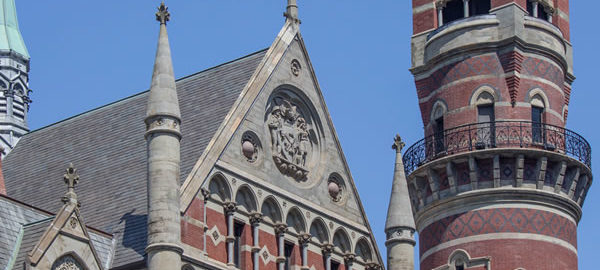

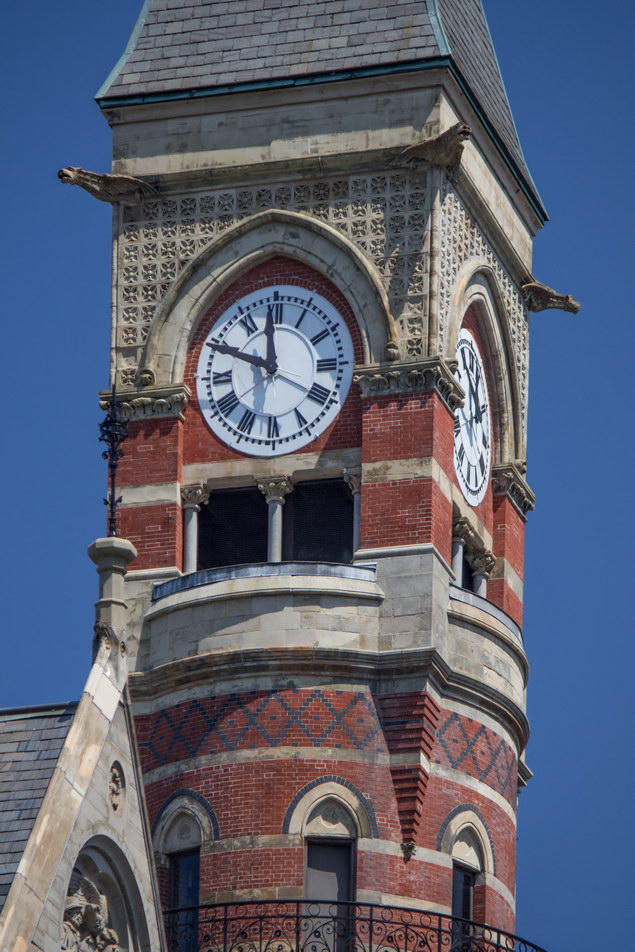
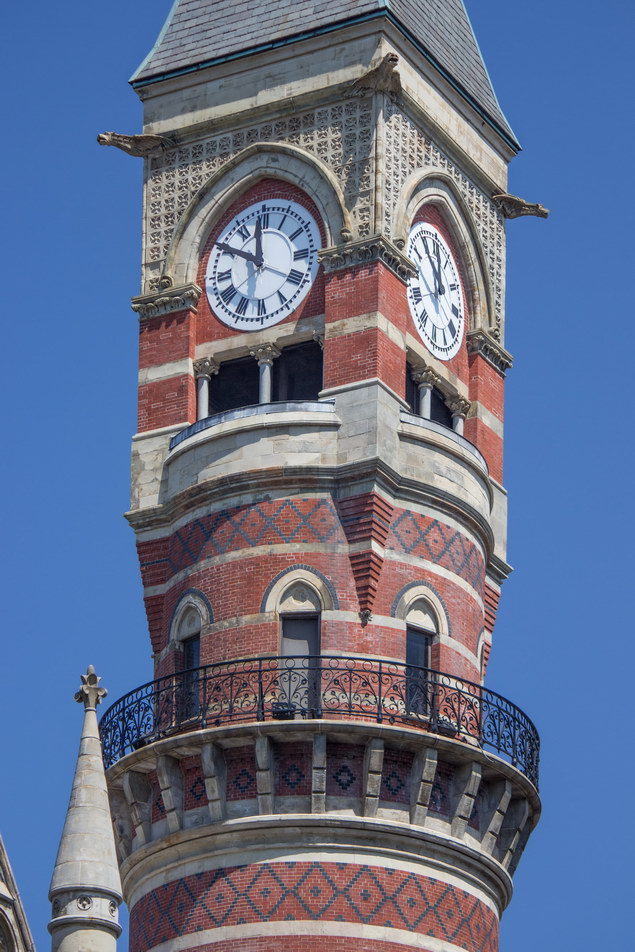

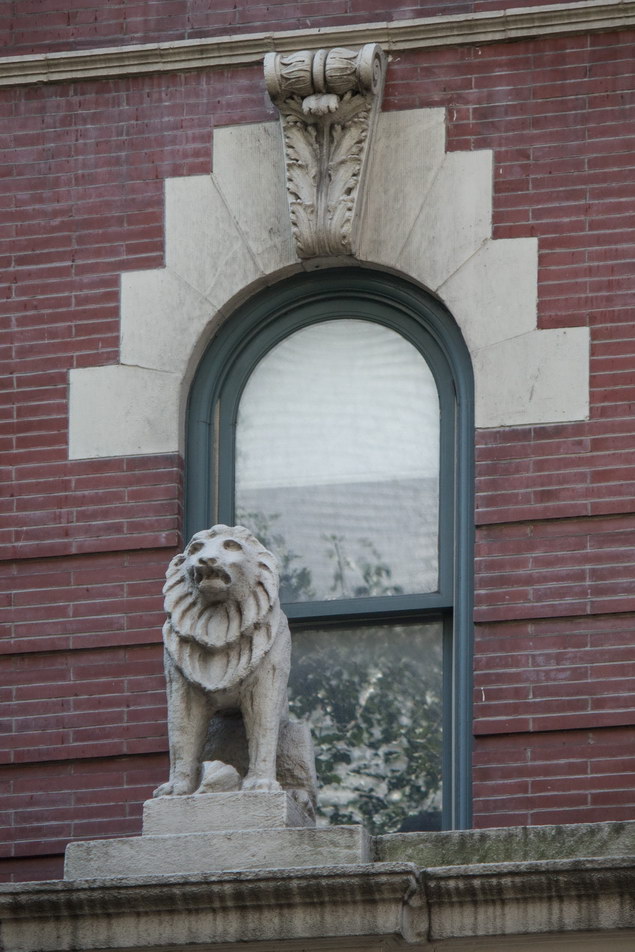
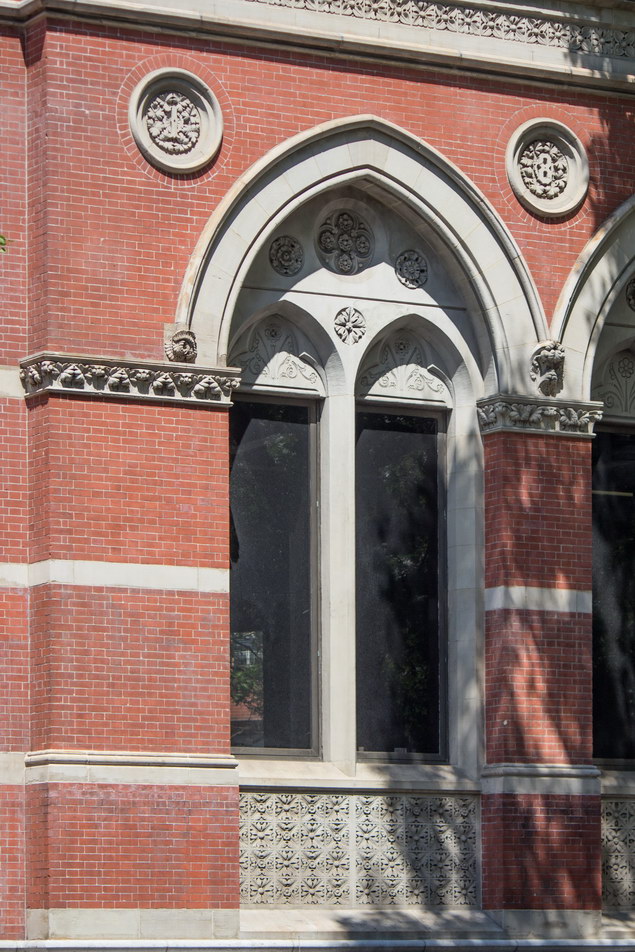






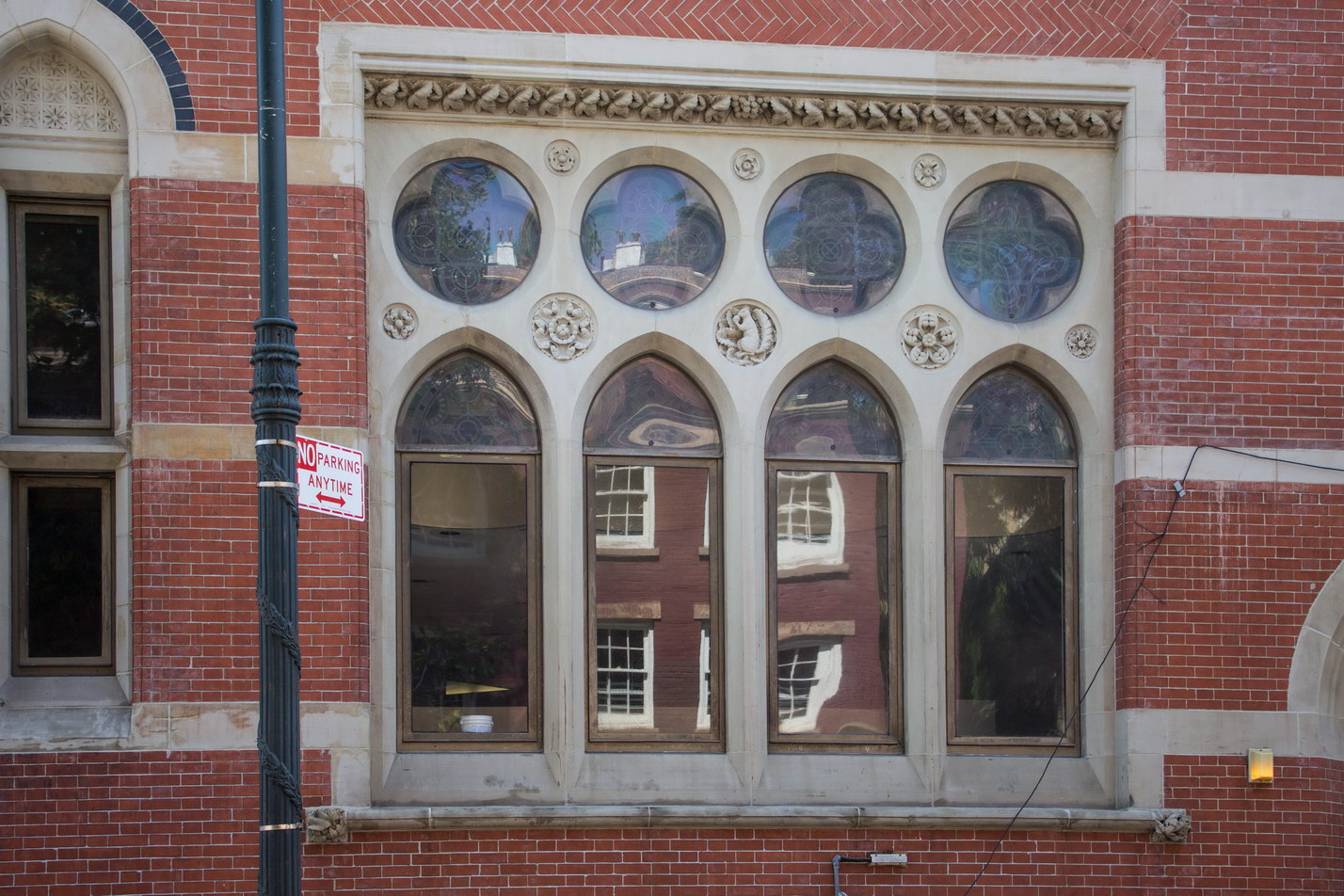

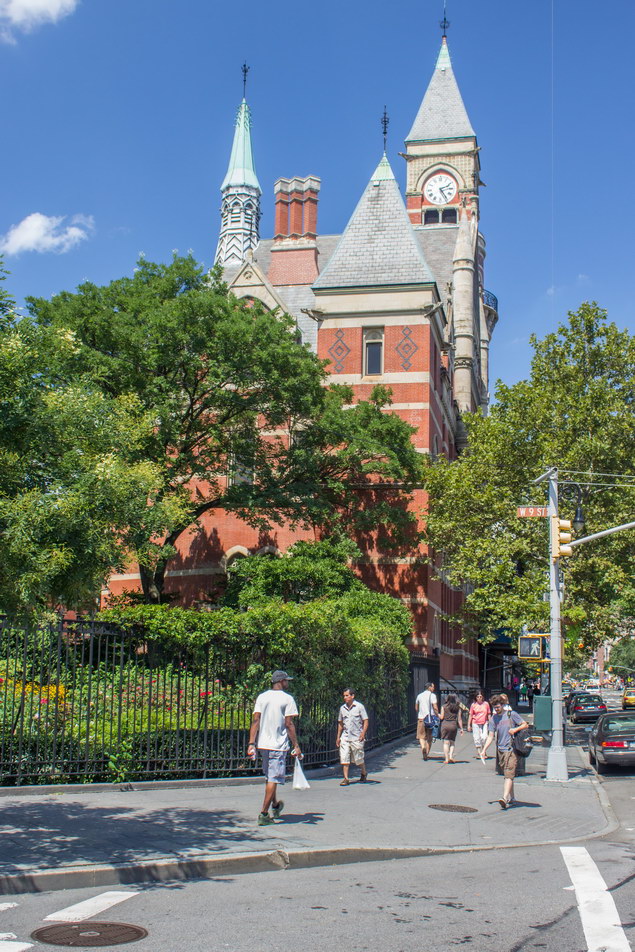

![[Fifth Avenue Swath] A00_4145 [6/20/2012 9:45:55 AM] [Fifth Avenue Swath] A00_4145 [6/20/2012 9:45:55 AM]](https://www.newyorkitecture.com/wp-content/gallery/fifth-avenue-swath/a00_4145_resize.jpg)
![[Fifth Avenue Swath] A00_4173 [6/20/2012 9:58:02 AM] [Fifth Avenue Swath] A00_4173 [6/20/2012 9:58:02 AM]](https://www.newyorkitecture.com/wp-content/gallery/fifth-avenue-swath/a00_4173_resize.jpg)
![[Fifth Avenue Swath] A00_4189 [6/20/2012 10:07:36 AM] [Fifth Avenue Swath] A00_4189 [6/20/2012 10:07:36 AM]](https://www.newyorkitecture.com/wp-content/gallery/fifth-avenue-swath/a00_4189_resize.jpg)
![[Fifth Avenue Swath] A00_5143 [7/7/2012 9:09:57 AM] [Fifth Avenue Swath] A00_5143 [7/7/2012 9:09:57 AM]](https://www.newyorkitecture.com/wp-content/gallery/fifth-avenue-swath/a00_5143_resize.jpg)
![[Fifth Avenue Swath] A00_5165 [7/7/2012 9:17:44 AM] [Fifth Avenue Swath] A00_5165 [7/7/2012 9:17:44 AM]](https://www.newyorkitecture.com/wp-content/gallery/fifth-avenue-swath/a00_5165_resize.jpg)
![[Fifth Avenue Swath] A00_5217 [7/7/2012 9:39:56 AM] [Fifth Avenue Swath] A00_5217 [7/7/2012 9:39:56 AM]](https://www.newyorkitecture.com/wp-content/gallery/fifth-avenue-swath/a00_5217_resize.jpg)
![[Fifth Avenue Swath] A00_5234 [7/7/2012 9:47:23 AM] [Fifth Avenue Swath] A00_5234 [7/7/2012 9:47:23 AM]](https://www.newyorkitecture.com/wp-content/gallery/fifth-avenue-swath/a00_5234_resize.jpg)
![[Fifth Avenue Swath] A00_5395 [7/7/2012 1:22:29 PM] [Fifth Avenue Swath] A00_5395 [7/7/2012 1:22:29 PM]](https://www.newyorkitecture.com/wp-content/gallery/fifth-avenue-swath/a00_5395_resize.jpg)
![[Fifth Avenue Swath] AB0_4183 [6/20/2012 10:02:37 AM] [Fifth Avenue Swath] AB0_4183 [6/20/2012 10:02:37 AM]](https://www.newyorkitecture.com/wp-content/gallery/fifth-avenue-swath/ab0_4183_resize.jpg)
![[Fifth Avenue Swath] AB0_5117 [7/7/2012 9:00:25 AM] [Fifth Avenue Swath] AB0_5117 [7/7/2012 9:00:25 AM]](https://www.newyorkitecture.com/wp-content/gallery/fifth-avenue-swath/ab0_5117_resize.jpg)
![[Fifth Avenue Swath] AB0_5203 [7/7/2012 9:32:36 AM] [Fifth Avenue Swath] AB0_5203 [7/7/2012 9:32:36 AM]](https://www.newyorkitecture.com/wp-content/gallery/fifth-avenue-swath/ab0_5203_resize.jpg)
![[Fifth Avenue Swath] AC00_4095 [6/20/2012 9:19:15 AM] [Fifth Avenue Swath] AC00_4095 [6/20/2012 9:19:15 AM]](https://www.newyorkitecture.com/wp-content/gallery/fifth-avenue-swath/ac00_4095_resize.jpg)
![[Fifth Avenue Swath] AC00_4098 [6/20/2012 9:19:44 AM] [Fifth Avenue Swath] AC00_4098 [6/20/2012 9:19:44 AM]](https://www.newyorkitecture.com/wp-content/gallery/fifth-avenue-swath/ac00_4098_resize.jpg)
![[Fifth Avenue Swath] AC00_4100 [6/20/2012 9:21:10 AM] [Fifth Avenue Swath] AC00_4100 [6/20/2012 9:21:10 AM]](https://www.newyorkitecture.com/wp-content/gallery/fifth-avenue-swath/ac00_4100_resize.jpg)
![[Fifth Avenue Swath] AC00_4109 [6/20/2012 9:25:14 AM] [Fifth Avenue Swath] AC00_4109 [6/20/2012 9:25:14 AM]](https://www.newyorkitecture.com/wp-content/gallery/fifth-avenue-swath/ac00_4109_resize.jpg)
![[Fifth Avenue Swath] AC00_4112 [6/20/2012 9:25:40 AM] [Fifth Avenue Swath] AC00_4112 [6/20/2012 9:25:40 AM]](https://www.newyorkitecture.com/wp-content/gallery/fifth-avenue-swath/ac00_4112_resize.jpg)
![[Fifth Avenue Swath] AC00_4114 [6/20/2012 9:27:33 AM] [Fifth Avenue Swath] AC00_4114 [6/20/2012 9:27:33 AM]](https://www.newyorkitecture.com/wp-content/gallery/fifth-avenue-swath/ac00_4114_resize.jpg)
![[Fifth Avenue Swath] AC00_4119 [6/20/2012 9:31:52 AM] [Fifth Avenue Swath] AC00_4119 [6/20/2012 9:31:52 AM]](https://www.newyorkitecture.com/wp-content/gallery/fifth-avenue-swath/ac00_4119_resize.jpg)
![[Fifth Avenue Swath] AC00_4123 [6/20/2012 9:34:35 AM] [Fifth Avenue Swath] AC00_4123 [6/20/2012 9:34:35 AM]](https://www.newyorkitecture.com/wp-content/gallery/fifth-avenue-swath/ac00_4123_resize.jpg)
![[Fifth Avenue Swath] AC00_4132 [6/20/2012 9:39:28 AM] [Fifth Avenue Swath] AC00_4132 [6/20/2012 9:39:28 AM]](https://www.newyorkitecture.com/wp-content/gallery/fifth-avenue-swath/ac00_4132_resize.jpg)
![[Fifth Avenue Swath] AC00_4138 [6/20/2012 9:42:17 AM] [Fifth Avenue Swath] AC00_4138 [6/20/2012 9:42:17 AM]](https://www.newyorkitecture.com/wp-content/gallery/fifth-avenue-swath/ac00_4138_resize.jpg)
![[Fifth Avenue Swath] AC00_4140 [6/20/2012 9:43:29 AM] [Fifth Avenue Swath] AC00_4140 [6/20/2012 9:43:29 AM]](https://www.newyorkitecture.com/wp-content/gallery/fifth-avenue-swath/ac00_4140_resize.jpg)
![[Fifth Avenue Swath] AC00_4186 [6/20/2012 10:05:34 AM] [Fifth Avenue Swath] AC00_4186 [6/20/2012 10:05:34 AM]](https://www.newyorkitecture.com/wp-content/gallery/fifth-avenue-swath/ac00_4186_resize.jpg)
![[Fifth Avenue Swath] AC00_4187 [6/20/2012 10:05:53 AM] [Fifth Avenue Swath] AC00_4187 [6/20/2012 10:05:53 AM]](https://www.newyorkitecture.com/wp-content/gallery/fifth-avenue-swath/ac00_4187_resize.jpg)
![[Fifth Avenue Swath] AC00_5146 [7/7/2012 9:11:18 AM] [Fifth Avenue Swath] AC00_5146 [7/7/2012 9:11:18 AM]](https://www.newyorkitecture.com/wp-content/gallery/fifth-avenue-swath/ac00_5146_resize.jpg)
![[Fifth Avenue Swath] AC00_5148 [7/7/2012 9:12:31 AM] [Fifth Avenue Swath] AC00_5148 [7/7/2012 9:12:31 AM]](https://www.newyorkitecture.com/wp-content/gallery/fifth-avenue-swath/ac00_5148_resize.jpg)
![[Fifth Avenue Swath] AC00_5171 [7/7/2012 9:20:13 AM] [Fifth Avenue Swath] AC00_5171 [7/7/2012 9:20:13 AM]](https://www.newyorkitecture.com/wp-content/gallery/fifth-avenue-swath/ac00_5171_resize.jpg)
![[Fifth Avenue Swath] AC00_5199 [7/7/2012 9:31:26 AM] [Fifth Avenue Swath] AC00_5199 [7/7/2012 9:31:26 AM]](https://www.newyorkitecture.com/wp-content/gallery/fifth-avenue-swath/ac00_5199_resize.jpg)
![[Fifth Avenue Swath] AC00_5214 [7/7/2012 9:38:17 AM] [Fifth Avenue Swath] AC00_5214 [7/7/2012 9:38:17 AM]](https://www.newyorkitecture.com/wp-content/gallery/fifth-avenue-swath/ac00_5214_resize.jpg)
![[Fifth Avenue Swath] AC00_5222 [7/7/2012 9:41:57 AM] [Fifth Avenue Swath] AC00_5222 [7/7/2012 9:41:57 AM]](https://www.newyorkitecture.com/wp-content/gallery/fifth-avenue-swath/ac00_5222_resize.jpg)
![[Fifth Avenue Swath] AC00_5433 [7/8/2012 12:46:03 PM] [Fifth Avenue Swath] AC00_5433 [7/8/2012 12:46:03 PM]](https://www.newyorkitecture.com/wp-content/gallery/fifth-avenue-swath/ac00_5433_resize.jpg)
![[Fifth Avenue Swath] AZ0_3944 [6/20/2012 7:49:55 AM] [Fifth Avenue Swath] AZ0_3944 [6/20/2012 7:49:55 AM]](https://www.newyorkitecture.com/wp-content/gallery/fifth-avenue-swath/az0_3944_resize.jpg)
![[Fifth Avenue Swath] AZ0_3950 [6/20/2012 7:52:22 AM] [Fifth Avenue Swath] AZ0_3950 [6/20/2012 7:52:22 AM]](https://www.newyorkitecture.com/wp-content/gallery/fifth-avenue-swath/az0_3950_resize.jpg)
![[Fifth Avenue Swath] AZ0_3957 [6/20/2012 7:57:33 AM] [Fifth Avenue Swath] AZ0_3957 [6/20/2012 7:57:33 AM]](https://www.newyorkitecture.com/wp-content/gallery/fifth-avenue-swath/az0_3957_resize.jpg)
![[Fifth Avenue Swath] AZ0_3964 [6/20/2012 8:01:02 AM] [Fifth Avenue Swath] AZ0_3964 [6/20/2012 8:01:02 AM]](https://www.newyorkitecture.com/wp-content/gallery/fifth-avenue-swath/az0_3964_resize.jpg)
![[Fifth Avenue Swath] AZ0_3968 [6/20/2012 8:02:38 AM] [Fifth Avenue Swath] AZ0_3968 [6/20/2012 8:02:38 AM]](https://www.newyorkitecture.com/wp-content/gallery/fifth-avenue-swath/az0_3968_resize.jpg)
![[Fifth Avenue Swath] AZ0_3970 [6/20/2012 8:04:16 AM] [Fifth Avenue Swath] AZ0_3970 [6/20/2012 8:04:16 AM]](https://www.newyorkitecture.com/wp-content/gallery/fifth-avenue-swath/az0_3970_resize.jpg)

![[Fifth Avenue Swath] B01_5550 [7/8/2012 2:04:14 PM] [Fifth Avenue Swath] B01_5550 [7/8/2012 2:04:14 PM]](https://www.newyorkitecture.com/wp-content/gallery/fifth-avenue-swath/b01_5550_resize.jpg)
![[Fifth Avenue Swath] B02_5520 [7/8/2012 1:42:37 PM] [Fifth Avenue Swath] B02_5520 [7/8/2012 1:42:37 PM]](https://www.newyorkitecture.com/wp-content/gallery/fifth-avenue-swath/b02_5520_resize.jpg)
![[Fifth Avenue Swath] B03_5525 [7/8/2012 1:44:46 PM] [Fifth Avenue Swath] B03_5525 [7/8/2012 1:44:46 PM]](https://www.newyorkitecture.com/wp-content/gallery/fifth-avenue-swath/b03_5525_resize.jpg)
![[Fifth Avenue Swath] B04_4372 [6/21/2012 9:10:10 AM] [Fifth Avenue Swath] B04_4372 [6/21/2012 9:10:10 AM]](https://www.newyorkitecture.com/wp-content/gallery/fifth-avenue-swath/b04_4372_resize.jpg)
![[Fifth Avenue Swath] B05_5539 [7/8/2012 1:56:39 PM] [Fifth Avenue Swath] B05_5539 [7/8/2012 1:56:39 PM]](https://www.newyorkitecture.com/wp-content/gallery/fifth-avenue-swath/b05_5539_resize.jpg)
![[Fifth Avenue Swath] C01_3050 [6/11/2012 9:30:07 AM] [Fifth Avenue Swath] C01_3050 [6/11/2012 9:30:07 AM]](https://www.newyorkitecture.com/wp-content/gallery/fifth-avenue-swath/c01_3050_resize.jpg)
![[Fifth Avenue Swath] C02_4460 [6/21/2012 10:05:33 AM] [Fifth Avenue Swath] C02_4460 [6/21/2012 10:05:33 AM]](https://www.newyorkitecture.com/wp-content/gallery/fifth-avenue-swath/c02_4460_resize.jpg)
![[Fifth Avenue Swath] C03_4791 [7/3/2012 11:34:29 AM] [Fifth Avenue Swath] C03_4791 [7/3/2012 11:34:29 AM]](https://www.newyorkitecture.com/wp-content/gallery/fifth-avenue-swath/c03_4791_resize.jpg)
![[Fifth Avenue Swath] D01_4713 [7/3/2012 10:47:42 AM] [Fifth Avenue Swath] D01_4713 [7/3/2012 10:47:42 AM]](https://www.newyorkitecture.com/wp-content/gallery/fifth-avenue-swath/d01_4713_resize.jpg)
![[Fifth Avenue Swath] D02_4725 [7/3/2012 10:53:31 AM] [Fifth Avenue Swath] D02_4725 [7/3/2012 10:53:31 AM]](https://www.newyorkitecture.com/wp-content/gallery/fifth-avenue-swath/d02_4725_resize.jpg)
![[Fifth Avenue Swath] D03_4701 [7/3/2012 10:39:35 AM] [Fifth Avenue Swath] D03_4701 [7/3/2012 10:39:35 AM]](https://www.newyorkitecture.com/wp-content/gallery/fifth-avenue-swath/d03_4701_resize.jpg)
![[Fifth Avenue Swath] D04_4707 [7/3/2012 10:46:22 AM] [Fifth Avenue Swath] D04_4707 [7/3/2012 10:46:22 AM]](https://www.newyorkitecture.com/wp-content/gallery/fifth-avenue-swath/d04_4707_resize.jpg)
![[Fifth Avenue Swath] E00_3020 [6/11/2012 9:17:00 AM] [Fifth Avenue Swath] E00_3020 [6/11/2012 9:17:00 AM]](https://www.newyorkitecture.com/wp-content/gallery/fifth-avenue-swath/e00_3020_resize.jpg)
![[Fifth Avenue Swath] E00_3235 [6/11/2012 10:54:15 AM] [Fifth Avenue Swath] E00_3235 [6/11/2012 10:54:15 AM]](https://www.newyorkitecture.com/wp-content/gallery/fifth-avenue-swath/e00_3235_resize.jpg)
![[Fifth Avenue Swath] E00_4459 [6/21/2012 10:02:26 AM] [Fifth Avenue Swath] E00_4459 [6/21/2012 10:02:26 AM]](https://www.newyorkitecture.com/wp-content/gallery/fifth-avenue-swath/e00_4459_resize.jpg)
![[Fifth Avenue Swath] E00_4705 [7/3/2012 10:44:05 AM] [Fifth Avenue Swath] E00_4705 [7/3/2012 10:44:05 AM]](https://www.newyorkitecture.com/wp-content/gallery/fifth-avenue-swath/e00_4705_resize.jpg)
![[Fifth Avenue Swath] F00_3036 [6/11/2012 9:23:58 AM] [Fifth Avenue Swath] F00_3036 [6/11/2012 9:23:58 AM]](https://www.newyorkitecture.com/wp-content/gallery/fifth-avenue-swath/f00_3036_resize.jpg)
![[Fifth Avenue Swath] F00_3040 [6/11/2012 9:25:14 AM] [Fifth Avenue Swath] F00_3040 [6/11/2012 9:25:14 AM]](https://www.newyorkitecture.com/wp-content/gallery/fifth-avenue-swath/f00_3040_resize.jpg)
![[Fifth Avenue Swath] F00_3080 [6/11/2012 9:40:47 AM] [Fifth Avenue Swath] F00_3080 [6/11/2012 9:40:47 AM]](https://www.newyorkitecture.com/wp-content/gallery/fifth-avenue-swath/f00_3080_resize.jpg)
![[Fifth Avenue Swath] G00_3000 [6/11/2012 9:04:16 AM] [Fifth Avenue Swath] G00_3000 [6/11/2012 9:04:16 AM]](https://www.newyorkitecture.com/wp-content/gallery/fifth-avenue-swath/g00_3000_resize.jpg)
![[Fifth Avenue Swath] G00_3307 [6/11/2012 11:15:08 AM] [Fifth Avenue Swath] G00_3307 [6/11/2012 11:15:08 AM]](https://www.newyorkitecture.com/wp-content/gallery/fifth-avenue-swath/g00_3307_resize.jpg)
![[Fifth Avenue Swath] G00_3330 [6/11/2012 11:18:49 AM] [Fifth Avenue Swath] G00_3330 [6/11/2012 11:18:49 AM]](https://www.newyorkitecture.com/wp-content/gallery/fifth-avenue-swath/g00_3330_resize.jpg)
![[Fifth Avenue Swath] G00_3756 [6/15/2012 10:36:52 AM] [Fifth Avenue Swath] G00_3756 [6/15/2012 10:36:52 AM]](https://www.newyorkitecture.com/wp-content/gallery/fifth-avenue-swath/g00_3756_resize.jpg)
![[Fifth Avenue Swath] G00_3787 [6/15/2012 10:47:15 AM] [Fifth Avenue Swath] G00_3787 [6/15/2012 10:47:15 AM]](https://www.newyorkitecture.com/wp-content/gallery/fifth-avenue-swath/g00_3787_resize.jpg)
![[Fifth Avenue Swath] G00_4278 [6/21/2012 8:26:01 AM] [Fifth Avenue Swath] G00_4278 [6/21/2012 8:26:01 AM]](https://www.newyorkitecture.com/wp-content/gallery/fifth-avenue-swath/g00_4278_resize.jpg)
![[Fifth Avenue Swath] G00_4285 [6/21/2012 8:27:01 AM] [Fifth Avenue Swath] G00_4285 [6/21/2012 8:27:01 AM]](https://www.newyorkitecture.com/wp-content/gallery/fifth-avenue-swath/g00_4285_resize.jpg)
![[Fifth Avenue Swath] H10_3318 [6/11/2012 11:16:54 AM] [Fifth Avenue Swath] H10_3318 [6/11/2012 11:16:54 AM]](https://www.newyorkitecture.com/wp-content/gallery/fifth-avenue-swath/h10_3318_resize.jpg)
![[Fifth Avenue Swath] H10_3614 [6/15/2012 9:30:32 AM] [Fifth Avenue Swath] H10_3614 [6/15/2012 9:30:32 AM]](https://www.newyorkitecture.com/wp-content/gallery/fifth-avenue-swath/h10_3614_resize.jpg)
![[Fifth Avenue Swath] H20_3622 [6/15/2012 9:35:25 AM] [Fifth Avenue Swath] H20_3622 [6/15/2012 9:35:25 AM]](https://www.newyorkitecture.com/wp-content/gallery/fifth-avenue-swath/h20_3622_resize.jpg)
![[Fifth Avenue Swath] H20_4471 [6/21/2012 10:10:27 AM] [Fifth Avenue Swath] H20_4471 [6/21/2012 10:10:27 AM]](https://www.newyorkitecture.com/wp-content/gallery/fifth-avenue-swath/h20_4471_resize.jpg)
![[Fifth Avenue Swath] H30_4336 [6/21/2012 8:53:11 AM] [Fifth Avenue Swath] H30_4336 [6/21/2012 8:53:11 AM]](https://www.newyorkitecture.com/wp-content/gallery/fifth-avenue-swath/h30_4336_resize.jpg)
![[Fifth Avenue Swath] H30_4340 [6/21/2012 8:56:10 AM] [Fifth Avenue Swath] H30_4340 [6/21/2012 8:56:10 AM]](https://www.newyorkitecture.com/wp-content/gallery/fifth-avenue-swath/h30_4340_resize.jpg)
![[Fifth Avenue Swath] H40_4027 [6/20/2012 8:37:34 AM] [Fifth Avenue Swath] H40_4027 [6/20/2012 8:37:34 AM]](https://www.newyorkitecture.com/wp-content/gallery/fifth-avenue-swath/h40_4027_resize.jpg)
![[Fifth Avenue Swath] H40_4029 [6/20/2012 8:39:29 AM] [Fifth Avenue Swath] H40_4029 [6/20/2012 8:39:29 AM]](https://www.newyorkitecture.com/wp-content/gallery/fifth-avenue-swath/h40_4029_resize.jpg)
![[Fifth Avenue Swath] H40_4041 [6/20/2012 8:43:15 AM] [Fifth Avenue Swath] H40_4041 [6/20/2012 8:43:15 AM]](https://www.newyorkitecture.com/wp-content/gallery/fifth-avenue-swath/h40_4041_resize.jpg)
![[Fifth Avenue Swath] H40_4049 [6/20/2012 8:47:28 AM] [Fifth Avenue Swath] H40_4049 [6/20/2012 8:47:28 AM]](https://www.newyorkitecture.com/wp-content/gallery/fifth-avenue-swath/h40_4049_resize.jpg)
![[Fifth Avenue Swath] H50_3726 [6/15/2012 10:18:07 AM] [Fifth Avenue Swath] H50_3726 [6/15/2012 10:18:07 AM]](https://www.newyorkitecture.com/wp-content/gallery/fifth-avenue-swath/h50_3726_resize.jpg)
![[Fifth Avenue Swath] H60_3647 [6/15/2012 9:49:25 AM] [Fifth Avenue Swath] H60_3647 [6/15/2012 9:49:25 AM]](https://www.newyorkitecture.com/wp-content/gallery/fifth-avenue-swath/h60_3647_resize.jpg)
![[Fifth Avenue Swath] H70_4348 [6/21/2012 8:58:49 AM] [Fifth Avenue Swath] H70_4348 [6/21/2012 8:58:49 AM]](https://www.newyorkitecture.com/wp-content/gallery/fifth-avenue-swath/h70_4348_resize.jpg)
![[Fifth Avenue Swath] H70_4352 [6/21/2012 9:00:47 AM] [Fifth Avenue Swath] H70_4352 [6/21/2012 9:00:47 AM]](https://www.newyorkitecture.com/wp-content/gallery/fifth-avenue-swath/h70_4352_resize.jpg)
![[Fifth Avenue Swath] H80_4444 [6/21/2012 9:49:01 AM] [Fifth Avenue Swath] H80_4444 [6/21/2012 9:49:01 AM]](https://www.newyorkitecture.com/wp-content/gallery/fifth-avenue-swath/h80_4444_resize.jpg)
![[Fifth Avenue Swath] H90_3145 [6/11/2012 10:17:59 AM] [Fifth Avenue Swath] H90_3145 [6/11/2012 10:17:59 AM]](https://www.newyorkitecture.com/wp-content/gallery/fifth-avenue-swath/h90_3145_resize.jpg)
![[Fifth Avenue Swath] H90_3151 [6/11/2012 10:21:34 AM] [Fifth Avenue Swath] H90_3151 [6/11/2012 10:21:34 AM]](https://www.newyorkitecture.com/wp-content/gallery/fifth-avenue-swath/h90_3151_resize.jpg)
![[Fifth Avenue Swath] H90_3170 [6/11/2012 10:30:59 AM] [Fifth Avenue Swath] H90_3170 [6/11/2012 10:30:59 AM]](https://www.newyorkitecture.com/wp-content/gallery/fifth-avenue-swath/h90_3170_resize.jpg)
![[Fifth Avenue Swath] H90_3535 [6/15/2012 8:40:43 AM] [Fifth Avenue Swath] H90_3535 [6/15/2012 8:40:43 AM]](https://www.newyorkitecture.com/wp-content/gallery/fifth-avenue-swath/h90_3535_resize.jpg)
![[Fifth Avenue Swath] H90_3536 [6/15/2012 8:41:10 AM] [Fifth Avenue Swath] H90_3536 [6/15/2012 8:41:10 AM]](https://www.newyorkitecture.com/wp-content/gallery/fifth-avenue-swath/h90_3536_resize.jpg)
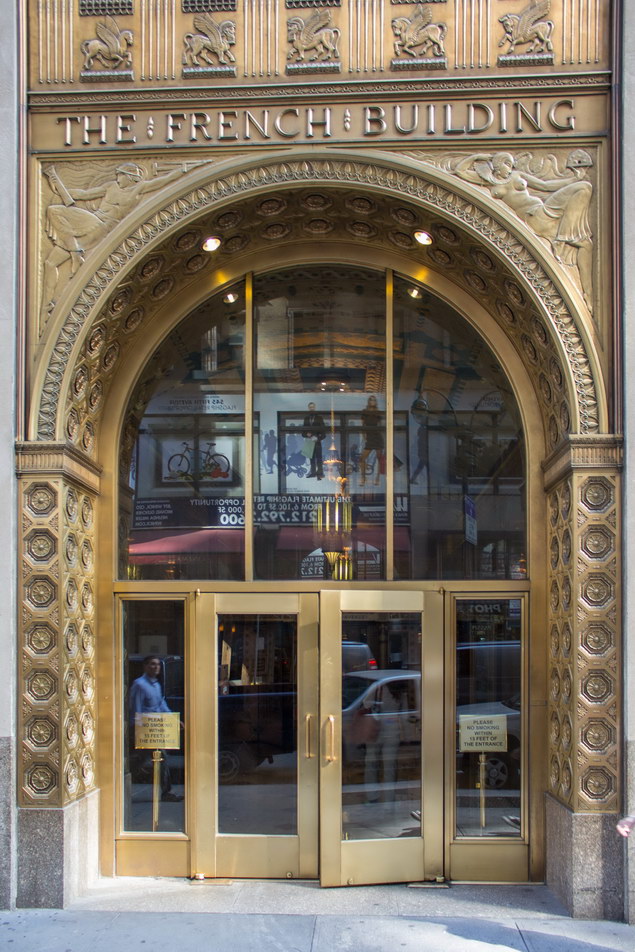
![[Fifth Avenue Swath] I00_3156 [6/11/2012 10:27:03 AM] [Fifth Avenue Swath] I00_3156 [6/11/2012 10:27:03 AM]](https://www.newyorkitecture.com/wp-content/gallery/fifth-avenue-swath/i00_3156_resize.jpg)
![[Fifth Avenue Swath] I00_3163 [6/11/2012 10:29:24 AM] [Fifth Avenue Swath] I00_3163 [6/11/2012 10:29:24 AM]](https://www.newyorkitecture.com/wp-content/gallery/fifth-avenue-swath/i00_3163_resize.jpg)
![[Fifth Avenue Swath] I00_3166 [6/11/2012 10:30:29 AM] [Fifth Avenue Swath] I00_3166 [6/11/2012 10:30:29 AM]](https://www.newyorkitecture.com/wp-content/gallery/fifth-avenue-swath/i00_3166_resize.jpg)
![[Fifth Avenue Swath] I00_3816 [6/15/2012 11:01:08 AM] [Fifth Avenue Swath] I00_3816 [6/15/2012 11:01:08 AM]](https://www.newyorkitecture.com/wp-content/gallery/fifth-avenue-swath/i00_3816_resize.jpg)
![[Sherry Netherland] IMG_4460 [6/21/2012 10:05:33 AM] [Sherry Netherland] IMG_4460 [6/21/2012 10:05:33 AM]](https://www.newyorkitecture.com/wp-content/gallery/fifth-avenue-swath/IMG_4460_resize.jpg)
![[Sherry Netherland] IMG_4668 [7/3/2012 10:20:41 AM] [Sherry Netherland] IMG_4668 [7/3/2012 10:20:41 AM]](https://www.newyorkitecture.com/wp-content/gallery/fifth-avenue-swath/IMG_4668_resize1.jpg)
![[Fifth Avenue Swath] J00_3281 [6/11/2012 11:08:19 AM] [Fifth Avenue Swath] J00_3281 [6/11/2012 11:08:19 AM]](https://www.newyorkitecture.com/wp-content/gallery/fifth-avenue-swath/j00_3281_resize.jpg)
![[Fifth Avenue Swath] J00_4455 [6/21/2012 10:01:05 AM] [Fifth Avenue Swath] J00_4455 [6/21/2012 10:01:05 AM]](https://www.newyorkitecture.com/wp-content/gallery/fifth-avenue-swath/j00_4455_resize.jpg)
![[Fifth Avenue Swath] J00_4764 [7/3/2012 11:24:27 AM] [Fifth Avenue Swath] J00_4764 [7/3/2012 11:24:27 AM]](https://www.newyorkitecture.com/wp-content/gallery/fifth-avenue-swath/j00_4764_resize.jpg)
![[Fifth Avenue Swath] J00_5290 [7/7/2012 10:56:30 AM] [Fifth Avenue Swath] J00_5290 [7/7/2012 10:56:30 AM]](https://www.newyorkitecture.com/wp-content/gallery/fifth-avenue-swath/j00_5290_resize.jpg)
![[Fifth Avenue Swath] K00_3140 [6/11/2012 10:16:59 AM] [Fifth Avenue Swath] K00_3140 [6/11/2012 10:16:59 AM]](https://www.newyorkitecture.com/wp-content/gallery/fifth-avenue-swath/k00_3140_resize.jpg)
![[Fifth Avenue Swath] K00_3291 [6/11/2012 11:11:14 AM] [Fifth Avenue Swath] K00_3291 [6/11/2012 11:11:14 AM]](https://www.newyorkitecture.com/wp-content/gallery/fifth-avenue-swath/k00_3291_resize.jpg)
![[Fifth Avenue Swath] K00_3806 [6/15/2012 10:56:18 AM] [Fifth Avenue Swath] K00_3806 [6/15/2012 10:56:18 AM]](https://www.newyorkitecture.com/wp-content/gallery/fifth-avenue-swath/k00_3806_resize.jpg)
![[Fifth Avenue Swath] K00_3841 [6/15/2012 11:14:10 AM] [Fifth Avenue Swath] K00_3841 [6/15/2012 11:14:10 AM]](https://www.newyorkitecture.com/wp-content/gallery/fifth-avenue-swath/k00_3841_resize.jpg)
![[Fifth Avenue Swath] K00_4463 [6/21/2012 10:06:00 AM] [Fifth Avenue Swath] K00_4463 [6/21/2012 10:06:00 AM]](https://www.newyorkitecture.com/wp-content/gallery/fifth-avenue-swath/k00_4463_resize.jpg)
![[Fifth Avenue Swath] L00_3351 [6/11/2012 11:26:28 AM] [Fifth Avenue Swath] L00_3351 [6/11/2012 11:26:28 AM]](https://www.newyorkitecture.com/wp-content/gallery/fifth-avenue-swath/l00_3351_resize.jpg)
![[Fifth Avenue Swath] L00_3546 [6/15/2012 8:53:16 AM] [Fifth Avenue Swath] L00_3546 [6/15/2012 8:53:16 AM]](https://www.newyorkitecture.com/wp-content/gallery/fifth-avenue-swath/l00_3546_resize.jpg)
![[Fifth Avenue Swath] L00_3625 [6/15/2012 9:37:53 AM] [Fifth Avenue Swath] L00_3625 [6/15/2012 9:37:53 AM]](https://www.newyorkitecture.com/wp-content/gallery/fifth-avenue-swath/l00_3625_resize.jpg)
![[Fifth Avenue Swath] L00_5357 [7/7/2012 11:18:00 AM] [Fifth Avenue Swath] L00_5357 [7/7/2012 11:18:00 AM]](https://www.newyorkitecture.com/wp-content/gallery/fifth-avenue-swath/l00_5357_resize.jpg)
![[Fifth Avenue Swath] M00_3204 [6/11/2012 10:45:28 AM] [Fifth Avenue Swath] M00_3204 [6/11/2012 10:45:28 AM]](https://www.newyorkitecture.com/wp-content/gallery/fifth-avenue-swath/m00_3204_resize.jpg)
![[Fifth Avenue Swath] M00_3216 [6/11/2012 10:47:44 AM] [Fifth Avenue Swath] M00_3216 [6/11/2012 10:47:44 AM]](https://www.newyorkitecture.com/wp-content/gallery/fifth-avenue-swath/m00_3216_resize.jpg)
![[Fifth Avenue Swath] M00_3360 [6/11/2012 11:28:59 AM] [Fifth Avenue Swath] M00_3360 [6/11/2012 11:28:59 AM]](https://www.newyorkitecture.com/wp-content/gallery/fifth-avenue-swath/m00_3360_resize.jpg)
![[Fifth Avenue Swath] N00_3750 [6/15/2012 10:31:27 AM] [Fifth Avenue Swath] N00_3750 [6/15/2012 10:31:27 AM]](https://www.newyorkitecture.com/wp-content/gallery/fifth-avenue-swath/n00_3750_resize.jpg)
![[Fifth Avenue Swath] N00_3753 [6/15/2012 10:31:54 AM] [Fifth Avenue Swath] N00_3753 [6/15/2012 10:31:54 AM]](https://www.newyorkitecture.com/wp-content/gallery/fifth-avenue-swath/n00_3753_resize.jpg)
![[Fifth Avenue Swath] N00_3989 [6/20/2012 8:19:33 AM] [Fifth Avenue Swath] N00_3989 [6/20/2012 8:19:33 AM]](https://www.newyorkitecture.com/wp-content/gallery/fifth-avenue-swath/n00_3989_resize.jpg)
![[Fifth Avenue Swath] O00_4324 [6/21/2012 8:43:39 AM] [Fifth Avenue Swath] O00_4324 [6/21/2012 8:43:39 AM]](https://www.newyorkitecture.com/wp-content/gallery/fifth-avenue-swath/o00_4324_resize.jpg)
![[Fifth Avenue Swath] O00_4328 [6/21/2012 8:45:02 AM] [Fifth Avenue Swath] O00_4328 [6/21/2012 8:45:02 AM]](https://www.newyorkitecture.com/wp-content/gallery/fifth-avenue-swath/o00_4328_resize.jpg)
![[Fifth Avenue Swath] O00_4333 [6/21/2012 8:49:43 AM] [Fifth Avenue Swath] O00_4333 [6/21/2012 8:49:43 AM]](https://www.newyorkitecture.com/wp-content/gallery/fifth-avenue-swath/o00_4333_resize.jpg)
![[Fifth Avenue Swath] O00_5528 [7/8/2012 1:48:47 PM] [Fifth Avenue Swath] O00_5528 [7/8/2012 1:48:47 PM]](https://www.newyorkitecture.com/wp-content/gallery/fifth-avenue-swath/o00_5528_resize.jpg)
![[Fifth Avenue Swath] P00_3830 [6/15/2012 11:10:59 AM] [Fifth Avenue Swath] P00_3830 [6/15/2012 11:10:59 AM]](https://www.newyorkitecture.com/wp-content/gallery/fifth-avenue-swath/p00_3830_resize.jpg)
![[Fifth Avenue Swath] P00_3835 [6/15/2012 11:12:35 AM] [Fifth Avenue Swath] P00_3835 [6/15/2012 11:12:35 AM]](https://www.newyorkitecture.com/wp-content/gallery/fifth-avenue-swath/p00_3835_resize.jpg)
![[Fifth Avenue Swath] P00_3842 [6/15/2012 11:14:55 AM] [Fifth Avenue Swath] P00_3842 [6/15/2012 11:14:55 AM]](https://www.newyorkitecture.com/wp-content/gallery/fifth-avenue-swath/p00_3842_resize.jpg)
![[Fifth Avenue Swath] P00_4059 [6/20/2012 8:53:45 AM] [Fifth Avenue Swath] P00_4059 [6/20/2012 8:53:45 AM]](https://www.newyorkitecture.com/wp-content/gallery/fifth-avenue-swath/p00_4059_resize.jpg)
![[Fifth Avenue Swath] Q00_3088 [6/11/2012 9:44:22 AM] [Fifth Avenue Swath] Q00_3088 [6/11/2012 9:44:22 AM]](https://www.newyorkitecture.com/wp-content/gallery/fifth-avenue-swath/q00_3088_resize.jpg)
![[Fifth Avenue Swath] Q00_3096 [6/11/2012 9:48:34 AM] [Fifth Avenue Swath] Q00_3096 [6/11/2012 9:48:34 AM]](https://www.newyorkitecture.com/wp-content/gallery/fifth-avenue-swath/q00_3096_resize.jpg)
![[Fifth Avenue Swath] Q00_3107 [6/11/2012 9:55:02 AM] [Fifth Avenue Swath] Q00_3107 [6/11/2012 9:55:02 AM]](https://www.newyorkitecture.com/wp-content/gallery/fifth-avenue-swath/q00_3107_resize.jpg)
![[Fifth Avenue Swath] Q00_3113 [6/11/2012 9:56:26 AM] [Fifth Avenue Swath] Q00_3113 [6/11/2012 9:56:26 AM]](https://www.newyorkitecture.com/wp-content/gallery/fifth-avenue-swath/q00_3113_resize.jpg)
![[Fifth Avenue Swath] Q00_3186 [6/11/2012 10:36:26 AM] [Fifth Avenue Swath] Q00_3186 [6/11/2012 10:36:26 AM]](https://www.newyorkitecture.com/wp-content/gallery/fifth-avenue-swath/q00_3186_resize.jpg)
![[Fifth Avenue Swath] Q00_3189 [6/11/2012 10:36:36 AM] [Fifth Avenue Swath] Q00_3189 [6/11/2012 10:36:36 AM]](https://www.newyorkitecture.com/wp-content/gallery/fifth-avenue-swath/q00_3189_resize.jpg)
![[Fifth Avenue Swath] Q00_3194 [6/11/2012 10:40:41 AM] [Fifth Avenue Swath] Q00_3194 [6/11/2012 10:40:41 AM]](https://www.newyorkitecture.com/wp-content/gallery/fifth-avenue-swath/q00_3194_resize.jpg)
![[Fifth Avenue Swath] Q00_3230 [6/11/2012 10:52:05 AM] [Fifth Avenue Swath] Q00_3230 [6/11/2012 10:52:05 AM]](https://www.newyorkitecture.com/wp-content/gallery/fifth-avenue-swath/q00_3230_resize.jpg)
![[Fifth Avenue Swath] Q00_3232 [6/11/2012 10:53:26 AM] [Fifth Avenue Swath] Q00_3232 [6/11/2012 10:53:26 AM]](https://www.newyorkitecture.com/wp-content/gallery/fifth-avenue-swath/q00_3232_resize.jpg)
![[Fifth Avenue Swath] Q00_3236 [6/11/2012 10:54:33 AM] [Fifth Avenue Swath] Q00_3236 [6/11/2012 10:54:33 AM]](https://www.newyorkitecture.com/wp-content/gallery/fifth-avenue-swath/q00_3236_resize.jpg)
![[Fifth Avenue Swath] Q00_3251 [6/11/2012 10:59:50 AM] [Fifth Avenue Swath] Q00_3251 [6/11/2012 10:59:50 AM]](https://www.newyorkitecture.com/wp-content/gallery/fifth-avenue-swath/q00_3251_resize.jpg)
![[Fifth Avenue Swath] Q00_3253 [6/11/2012 11:01:27 AM] [Fifth Avenue Swath] Q00_3253 [6/11/2012 11:01:27 AM]](https://www.newyorkitecture.com/wp-content/gallery/fifth-avenue-swath/q00_3253_resize.jpg)
![[Fifth Avenue Swath] Q00_3262 [6/11/2012 11:03:22 AM] [Fifth Avenue Swath] Q00_3262 [6/11/2012 11:03:22 AM]](https://www.newyorkitecture.com/wp-content/gallery/fifth-avenue-swath/q00_3262_resize.jpg)
![[Fifth Avenue Swath] Q00_3275 [6/11/2012 11:07:08 AM] [Fifth Avenue Swath] Q00_3275 [6/11/2012 11:07:08 AM]](https://www.newyorkitecture.com/wp-content/gallery/fifth-avenue-swath/q00_3275_resize.jpg)
![[Fifth Avenue Swath] Q00_3300 [6/11/2012 11:13:13 AM] [Fifth Avenue Swath] Q00_3300 [6/11/2012 11:13:13 AM]](https://www.newyorkitecture.com/wp-content/gallery/fifth-avenue-swath/q00_3300_resize.jpg)
![[Fifth Avenue Swath] Q00_3565 [6/15/2012 9:02:26 AM] [Fifth Avenue Swath] Q00_3565 [6/15/2012 9:02:26 AM]](https://www.newyorkitecture.com/wp-content/gallery/fifth-avenue-swath/q00_3565_resize.jpg)
![[Fifth Avenue Swath] Q00_3671 [6/15/2012 9:58:38 AM] [Fifth Avenue Swath] Q00_3671 [6/15/2012 9:58:38 AM]](https://www.newyorkitecture.com/wp-content/gallery/fifth-avenue-swath/q00_3671_resize.jpg)
![[Fifth Avenue Swath] Q00_3810 [6/15/2012 10:57:51 AM] [Fifth Avenue Swath] Q00_3810 [6/15/2012 10:57:51 AM]](https://www.newyorkitecture.com/wp-content/gallery/fifth-avenue-swath/q00_3810_resize.jpg)
![[Fifth Avenue Swath] Q00_3846 [6/15/2012 11:16:43 AM] [Fifth Avenue Swath] Q00_3846 [6/15/2012 11:16:43 AM]](https://www.newyorkitecture.com/wp-content/gallery/fifth-avenue-swath/Q00_3846_resize.jpg)
![[Fifth Avenue Swath] Q00_3851 [6/15/2012 11:20:27 AM] [Fifth Avenue Swath] Q00_3851 [6/15/2012 11:20:27 AM]](https://www.newyorkitecture.com/wp-content/gallery/fifth-avenue-swath/Q00_3851_resize.jpg)
![[Fifth Avenue Swath] Q00_4003 [6/20/2012 8:26:00 AM] [Fifth Avenue Swath] Q00_4003 [6/20/2012 8:26:00 AM]](https://www.newyorkitecture.com/wp-content/gallery/fifth-avenue-swath/Q00_4003_resize.jpg)
![[Fifth Avenue Swath] Q00_4011 [6/20/2012 8:29:46 AM] [Fifth Avenue Swath] Q00_4011 [6/20/2012 8:29:46 AM]](https://www.newyorkitecture.com/wp-content/gallery/fifth-avenue-swath/Q00_4011_resize.jpg)
![[Fifth Avenue Swath] Q00_4090 [6/20/2012 9:16:19 AM] [Fifth Avenue Swath] Q00_4090 [6/20/2012 9:16:19 AM]](https://www.newyorkitecture.com/wp-content/gallery/fifth-avenue-swath/Q00_4090_resize.jpg)
![[Fifth Avenue Swath] Q00_4238 [6/20/2012 10:28:46 AM] [Fifth Avenue Swath] Q00_4238 [6/20/2012 10:28:46 AM]](https://www.newyorkitecture.com/wp-content/gallery/fifth-avenue-swath/Q00_4238_resize.jpg)
![[Fifth Avenue Swath] Q00_4295 [6/21/2012 8:31:09 AM] [Fifth Avenue Swath] Q00_4295 [6/21/2012 8:31:09 AM]](https://www.newyorkitecture.com/wp-content/gallery/fifth-avenue-swath/Q00_4295_resize.jpg)
![[Fifth Avenue Swath] Q00_4355 [6/21/2012 9:02:15 AM] [Fifth Avenue Swath] Q00_4355 [6/21/2012 9:02:15 AM]](https://www.newyorkitecture.com/wp-content/gallery/fifth-avenue-swath/Q00_4355_resize.jpg)
![[Fifth Avenue Swath] Q00_4397 [6/21/2012 9:20:27 AM] [Fifth Avenue Swath] Q00_4397 [6/21/2012 9:20:27 AM]](https://www.newyorkitecture.com/wp-content/gallery/fifth-avenue-swath/Q00_4397_resize.jpg)
![[Fifth Avenue Swath] Q00_4448 [6/21/2012 9:55:41 AM] [Fifth Avenue Swath] Q00_4448 [6/21/2012 9:55:41 AM]](https://www.newyorkitecture.com/wp-content/gallery/fifth-avenue-swath/Q00_4448_resize.jpg)
![[Fifth Avenue Swath] Q00_4784 [7/3/2012 11:30:50 AM] [Fifth Avenue Swath] Q00_4784 [7/3/2012 11:30:50 AM]](https://www.newyorkitecture.com/wp-content/gallery/fifth-avenue-swath/Q00_4784_resize.jpg)
![[Fifth Avenue Swath] R00_3009 [6/11/2012 9:09:45 AM] [Fifth Avenue Swath] R00_3009 [6/11/2012 9:09:45 AM]](https://www.newyorkitecture.com/wp-content/gallery/fifth-avenue-swath/R00_3009_resize.jpg)
![[Fifth Avenue Swath] R00_3012 [6/11/2012 9:14:47 AM] [Fifth Avenue Swath] R00_3012 [6/11/2012 9:14:47 AM]](https://www.newyorkitecture.com/wp-content/gallery/fifth-avenue-swath/R00_3012_resize.jpg)
![[Fifth Avenue Swath] R00_3064 [6/11/2012 9:35:11 AM] [Fifth Avenue Swath] R00_3064 [6/11/2012 9:35:11 AM]](https://www.newyorkitecture.com/wp-content/gallery/fifth-avenue-swath/R00_3064_resize.jpg)
![[Fifth Avenue Swath] R00_3118 [6/11/2012 10:01:52 AM] [Fifth Avenue Swath] R00_3118 [6/11/2012 10:01:52 AM]](https://www.newyorkitecture.com/wp-content/gallery/fifth-avenue-swath/R00_3118_resize.jpg)
![[Fifth Avenue Swath] R00_3368 [6/11/2012 11:32:36 AM] [Fifth Avenue Swath] R00_3368 [6/11/2012 11:32:36 AM]](https://www.newyorkitecture.com/wp-content/gallery/fifth-avenue-swath/R00_3368_resize.jpg)
![[Fifth Avenue Swath] R00_3550 [6/15/2012 8:56:30 AM] [Fifth Avenue Swath] R00_3550 [6/15/2012 8:56:30 AM]](https://www.newyorkitecture.com/wp-content/gallery/fifth-avenue-swath/R00_3550_resize.jpg)
![[Fifth Avenue Swath] R00_3580 [6/15/2012 9:08:21 AM] [Fifth Avenue Swath] R00_3580 [6/15/2012 9:08:21 AM]](https://www.newyorkitecture.com/wp-content/gallery/fifth-avenue-swath/R00_3580_resize.jpg)
![[Fifth Avenue Swath] R00_3581 [6/15/2012 9:08:27 AM] [Fifth Avenue Swath] R00_3581 [6/15/2012 9:08:27 AM]](https://www.newyorkitecture.com/wp-content/gallery/fifth-avenue-swath/R00_3581_resize.jpg)
![[Fifth Avenue Swath] R00_3600 [6/15/2012 9:26:14 AM] [Fifth Avenue Swath] R00_3600 [6/15/2012 9:26:14 AM]](https://www.newyorkitecture.com/wp-content/gallery/fifth-avenue-swath/R00_3600_resize.jpg)
![[Fifth Avenue Swath] R00_3707 [6/15/2012 10:11:24 AM] [Fifth Avenue Swath] R00_3707 [6/15/2012 10:11:24 AM]](https://www.newyorkitecture.com/wp-content/gallery/fifth-avenue-swath/R00_3707_resize.jpg)
![[Fifth Avenue Swath] R00_3712 [6/15/2012 10:13:00 AM] [Fifth Avenue Swath] R00_3712 [6/15/2012 10:13:00 AM]](https://www.newyorkitecture.com/wp-content/gallery/fifth-avenue-swath/R00_3712_resize.jpg)
![[Fifth Avenue Swath] R00_3715 [6/15/2012 10:14:09 AM] [Fifth Avenue Swath] R00_3715 [6/15/2012 10:14:09 AM]](https://www.newyorkitecture.com/wp-content/gallery/fifth-avenue-swath/R00_3715_resize.jpg)
![[Fifth Avenue Swath] R00_3721 [6/15/2012 10:16:54 AM] [Fifth Avenue Swath] R00_3721 [6/15/2012 10:16:54 AM]](https://www.newyorkitecture.com/wp-content/gallery/fifth-avenue-swath/R00_3721_resize.jpg)
![[Fifth Avenue Swath] R00_3731 [6/15/2012 10:22:21 AM] [Fifth Avenue Swath] R00_3731 [6/15/2012 10:22:21 AM]](https://www.newyorkitecture.com/wp-content/gallery/fifth-avenue-swath/R00_3731_resize.jpg)
![[Fifth Avenue Swath] R00_3823 [6/15/2012 11:03:12 AM] [Fifth Avenue Swath] R00_3823 [6/15/2012 11:03:12 AM]](https://www.newyorkitecture.com/wp-content/gallery/fifth-avenue-swath/R00_3823_resize.jpg)
![[Fifth Avenue Swath] R00_3935 [6/20/2012 7:43:11 AM] [Fifth Avenue Swath] R00_3935 [6/20/2012 7:43:11 AM]](https://www.newyorkitecture.com/wp-content/gallery/fifth-avenue-swath/R00_3935_resize.jpg)
![[Fifth Avenue Swath] R00_3980 [6/20/2012 8:10:05 AM] [Fifth Avenue Swath] R00_3980 [6/20/2012 8:10:05 AM]](https://www.newyorkitecture.com/wp-content/gallery/fifth-avenue-swath/R00_3980_resize.jpg)
![[Fifth Avenue Swath] R00_3983 [6/20/2012 8:13:09 AM] [Fifth Avenue Swath] R00_3983 [6/20/2012 8:13:09 AM]](https://www.newyorkitecture.com/wp-content/gallery/fifth-avenue-swath/R00_3983_resize.jpg)
![[Fifth Avenue Swath] R00_3985 [6/20/2012 8:15:14 AM] [Fifth Avenue Swath] R00_3985 [6/20/2012 8:15:14 AM]](https://www.newyorkitecture.com/wp-content/gallery/fifth-avenue-swath/R00_3985_resize.jpg)
![[Fifth Avenue Swath] R00_4005 [6/20/2012 8:27:45 AM] [Fifth Avenue Swath] R00_4005 [6/20/2012 8:27:45 AM]](https://www.newyorkitecture.com/wp-content/gallery/fifth-avenue-swath/R00_4005_resize.jpg)
![[Fifth Avenue Swath] R00_4044 [6/20/2012 8:45:53 AM] [Fifth Avenue Swath] R00_4044 [6/20/2012 8:45:53 AM]](https://www.newyorkitecture.com/wp-content/gallery/fifth-avenue-swath/R00_4044_resize.jpg)
![[Fifth Avenue Swath] R00_4052 [6/20/2012 8:49:24 AM] [Fifth Avenue Swath] R00_4052 [6/20/2012 8:49:24 AM]](https://www.newyorkitecture.com/wp-content/gallery/fifth-avenue-swath/R00_4052_resize.jpg)
![[Fifth Avenue Swath] R00_4087 [6/20/2012 9:13:36 AM] [Fifth Avenue Swath] R00_4087 [6/20/2012 9:13:36 AM]](https://www.newyorkitecture.com/wp-content/gallery/fifth-avenue-swath/R00_4087_resize.jpg)
![[Fifth Avenue Swath] R00_4227 [6/20/2012 10:23:46 AM] [Fifth Avenue Swath] R00_4227 [6/20/2012 10:23:46 AM]](https://www.newyorkitecture.com/wp-content/gallery/fifth-avenue-swath/R00_4227_resize.jpg)
![[Fifth Avenue Swath] R00_4275 [6/21/2012 8:24:10 AM] [Fifth Avenue Swath] R00_4275 [6/21/2012 8:24:10 AM]](https://www.newyorkitecture.com/wp-content/gallery/fifth-avenue-swath/R00_4275_resize.jpg)
![[Fifth Avenue Swath] R00_4293 [6/21/2012 8:29:39 AM] [Fifth Avenue Swath] R00_4293 [6/21/2012 8:29:39 AM]](https://www.newyorkitecture.com/wp-content/gallery/fifth-avenue-swath/R00_4293_resize.jpg)
![[Fifth Avenue Swath] R00_4313 [6/21/2012 8:38:21 AM] [Fifth Avenue Swath] R00_4313 [6/21/2012 8:38:21 AM]](https://www.newyorkitecture.com/wp-content/gallery/fifth-avenue-swath/R00_4313_resize.jpg)
![[Fifth Avenue Swath] R00_4337 [6/21/2012 8:53:56 AM] [Fifth Avenue Swath] R00_4337 [6/21/2012 8:53:56 AM]](https://www.newyorkitecture.com/wp-content/gallery/fifth-avenue-swath/R00_4337_resize.jpg)
![[Fifth Avenue Swath] R00_4380 [6/21/2012 9:13:53 AM] [Fifth Avenue Swath] R00_4380 [6/21/2012 9:13:53 AM]](https://www.newyorkitecture.com/wp-content/gallery/fifth-avenue-swath/R00_4380_resize.jpg)
![[Fifth Avenue Swath] R00_4386 [6/21/2012 9:19:13 AM] [Fifth Avenue Swath] R00_4386 [6/21/2012 9:19:13 AM]](https://www.newyorkitecture.com/wp-content/gallery/fifth-avenue-swath/R00_4386_resize.jpg)
![[Fifth Avenue Swath] R00_4400 [6/21/2012 9:21:09 AM] [Fifth Avenue Swath] R00_4400 [6/21/2012 9:21:09 AM]](https://www.newyorkitecture.com/wp-content/gallery/fifth-avenue-swath/R00_4400_resize.jpg)
![[Fifth Avenue Swath] R00_4405 [6/21/2012 9:21:51 AM] [Fifth Avenue Swath] R00_4405 [6/21/2012 9:21:51 AM]](https://www.newyorkitecture.com/wp-content/gallery/fifth-avenue-swath/R00_4405_resize.jpg)
![[Fifth Avenue Swath] R00_4409 [6/21/2012 9:23:17 AM] [Fifth Avenue Swath] R00_4409 [6/21/2012 9:23:17 AM]](https://www.newyorkitecture.com/wp-content/gallery/fifth-avenue-swath/R00_4409_resize.jpg)
![[Fifth Avenue Swath] R00_4491 [6/21/2012 10:28:46 AM] [Fifth Avenue Swath] R00_4491 [6/21/2012 10:28:46 AM]](https://www.newyorkitecture.com/wp-content/gallery/fifth-avenue-swath/R00_4491_resize.jpg)
![[Fifth Avenue Swath] R00_4495 [6/21/2012 10:32:27 AM] [Fifth Avenue Swath] R00_4495 [6/21/2012 10:32:27 AM]](https://www.newyorkitecture.com/wp-content/gallery/fifth-avenue-swath/R00_4495_resize.jpg)
![[Fifth Avenue Swath] R00_4496 [6/21/2012 10:33:12 AM] [Fifth Avenue Swath] R00_4496 [6/21/2012 10:33:12 AM]](https://www.newyorkitecture.com/wp-content/gallery/fifth-avenue-swath/R00_4496_resize.jpg)
![[Fifth Avenue Swath] R00_4503 [6/21/2012 10:34:26 AM] [Fifth Avenue Swath] R00_4503 [6/21/2012 10:34:26 AM]](https://www.newyorkitecture.com/wp-content/gallery/fifth-avenue-swath/R00_4503_resize.jpg)
![[Fifth Avenue Swath] R00_4632 [7/3/2012 10:08:50 AM] [Fifth Avenue Swath] R00_4632 [7/3/2012 10:08:50 AM]](https://www.newyorkitecture.com/wp-content/gallery/fifth-avenue-swath/R00_4632_resize.jpg)
![[Fifth Avenue Swath] R00_4634 [7/3/2012 10:09:56 AM] [Fifth Avenue Swath] R00_4634 [7/3/2012 10:09:56 AM]](https://www.newyorkitecture.com/wp-content/gallery/fifth-avenue-swath/R00_4634_resize.jpg)
![[Fifth Avenue Swath] R00_4642 [7/3/2012 10:15:13 AM] [Fifth Avenue Swath] R00_4642 [7/3/2012 10:15:13 AM]](https://www.newyorkitecture.com/wp-content/gallery/fifth-avenue-swath/R00_4642_resize.jpg)
![[Fifth Avenue Swath] R00_4702 [7/3/2012 10:40:07 AM] [Fifth Avenue Swath] R00_4702 [7/3/2012 10:40:07 AM]](https://www.newyorkitecture.com/wp-content/gallery/fifth-avenue-swath/R00_4702_resize.jpg)
![[Fifth Avenue Swath] R00_4728 [7/3/2012 10:55:15 AM] [Fifth Avenue Swath] R00_4728 [7/3/2012 10:55:15 AM]](https://www.newyorkitecture.com/wp-content/gallery/fifth-avenue-swath/R00_4728_resize.jpg)
![[Fifth Avenue Swath] R00_4736 [7/3/2012 10:59:04 AM] [Fifth Avenue Swath] R00_4736 [7/3/2012 10:59:04 AM]](https://www.newyorkitecture.com/wp-content/gallery/fifth-avenue-swath/R00_4736_resize.jpg)
![[Fifth Avenue Swath] R00_4738 [7/3/2012 11:02:40 AM] [Fifth Avenue Swath] R00_4738 [7/3/2012 11:02:40 AM]](https://www.newyorkitecture.com/wp-content/gallery/fifth-avenue-swath/R00_4738_resize.jpg)
![[Fifth Avenue Swath] R00_4749 [7/3/2012 11:04:58 AM] [Fifth Avenue Swath] R00_4749 [7/3/2012 11:04:58 AM]](https://www.newyorkitecture.com/wp-content/gallery/fifth-avenue-swath/R00_4749_resize.jpg)
![[Fifth Avenue Swath] R00_4794 [7/3/2012 11:38:29 AM] [Fifth Avenue Swath] R00_4794 [7/3/2012 11:38:29 AM]](https://www.newyorkitecture.com/wp-content/gallery/fifth-avenue-swath/R00_4794_resize.jpg)
![[Fifth Avenue Swath] R00_5178 [7/7/2012 9:22:32 AM] [Fifth Avenue Swath] R00_5178 [7/7/2012 9:22:32 AM]](https://www.newyorkitecture.com/wp-content/gallery/fifth-avenue-swath/R00_5178_resize.jpg)
![[Fifth Avenue Swath] R00_5179 [7/7/2012 9:23:13 AM] [Fifth Avenue Swath] R00_5179 [7/7/2012 9:23:13 AM]](https://www.newyorkitecture.com/wp-content/gallery/fifth-avenue-swath/R00_5179_resize.jpg)
![[Fifth Avenue Swath] R00_5442 [7/8/2012 12:56:27 PM] [Fifth Avenue Swath] R00_5442 [7/8/2012 12:56:27 PM]](https://www.newyorkitecture.com/wp-content/gallery/fifth-avenue-swath/R00_5442_resize.jpg)
![[Fifth Avenue Swath] R00_5508 [7/8/2012 1:33:08 PM] [Fifth Avenue Swath] R00_5508 [7/8/2012 1:33:08 PM]](https://www.newyorkitecture.com/wp-content/gallery/fifth-avenue-swath/R00_5508_resize.jpg)
![[Fifth Avenue Swath] R00_5534 [7/8/2012 1:52:38 PM] [Fifth Avenue Swath] R00_5534 [7/8/2012 1:52:38 PM]](https://www.newyorkitecture.com/wp-content/gallery/fifth-avenue-swath/R00_5534_resize.jpg)
![[Fifth Avenue Swath] R01_4010 [6/20/2012 8:29:23 AM] [Fifth Avenue Swath] R01_4010 [6/20/2012 8:29:23 AM]](https://www.newyorkitecture.com/wp-content/gallery/fifth-avenue-swath/R01_4010_resize.jpg)
![[Fifth Avenue Swath] R01_4115 [6/20/2012 9:28:07 AM] [Fifth Avenue Swath] R01_4115 [6/20/2012 9:28:07 AM]](https://www.newyorkitecture.com/wp-content/gallery/fifth-avenue-swath/R01_4115_resize.jpg)
![[Fifth Avenue Swath] R02_4244 [6/21/2012 8:11:19 AM] [Fifth Avenue Swath] R02_4244 [6/21/2012 8:11:19 AM]](https://www.newyorkitecture.com/wp-content/gallery/fifth-avenue-swath/R02_4244_resize.jpg)
![[Fifth Avenue Swath] R02_5430 [7/8/2012 12:45:17 PM] [Fifth Avenue Swath] R02_5430 [7/8/2012 12:45:17 PM]](https://www.newyorkitecture.com/wp-content/gallery/fifth-avenue-swath/R02_5430_resize.jpg)
![[Fifth Avenue Swath] R03_3301 [6/11/2012 11:13:53 AM] [Fifth Avenue Swath] R03_3301 [6/11/2012 11:13:53 AM]](https://www.newyorkitecture.com/wp-content/gallery/fifth-avenue-swath/R03_3301_resize.jpg)
![[Fifth Avenue Swath] R03_3575 [6/15/2012 9:06:49 AM] [Fifth Avenue Swath] R03_3575 [6/15/2012 9:06:49 AM]](https://www.newyorkitecture.com/wp-content/gallery/fifth-avenue-swath/R03_3575_resize.jpg)
![[Fifth Avenue Swath] R03_5291 [7/7/2012 10:56:35 AM] [Fifth Avenue Swath] R03_5291 [7/7/2012 10:56:35 AM]](https://www.newyorkitecture.com/wp-content/gallery/fifth-avenue-swath/R03_5291_resize.jpg)
![[Fifth Avenue Swath] R04_3778 [6/15/2012 10:42:33 AM] [Fifth Avenue Swath] R04_3778 [6/15/2012 10:42:33 AM]](https://www.newyorkitecture.com/wp-content/gallery/fifth-avenue-swath/R04_3778_resize.jpg)
![[Fifth Avenue Swath] R04_3779 [6/15/2012 10:43:56 AM] [Fifth Avenue Swath] R04_3779 [6/15/2012 10:43:56 AM]](https://www.newyorkitecture.com/wp-content/gallery/fifth-avenue-swath/R04_3779_resize.jpg)
![[Fifth Avenue Swath] R04_5176 [7/7/2012 9:21:28 AM] [Fifth Avenue Swath] R04_5176 [7/7/2012 9:21:28 AM]](https://www.newyorkitecture.com/wp-content/gallery/fifth-avenue-swath/R04_5176_resize.jpg)
![[Fifth Avenue Swath] R10_3627 [6/15/2012 9:40:29 AM] [Fifth Avenue Swath] R10_3627 [6/15/2012 9:40:29 AM]](https://www.newyorkitecture.com/wp-content/gallery/fifth-avenue-swath/R10_3627_resize.jpg)
![[Fifth Avenue Swath] R10_3630 [6/15/2012 9:40:51 AM] [Fifth Avenue Swath] R10_3630 [6/15/2012 9:40:51 AM]](https://www.newyorkitecture.com/wp-content/gallery/fifth-avenue-swath/R10_3630_resize.jpg)
![[Fifth Avenue Swath] R10_3636 [6/15/2012 9:44:15 AM] [Fifth Avenue Swath] R10_3636 [6/15/2012 9:44:15 AM]](https://www.newyorkitecture.com/wp-content/gallery/fifth-avenue-swath/R10_3636_resize.jpg)
![[Fifth Avenue Swath] R10_3637 [6/15/2012 9:44:38 AM] [Fifth Avenue Swath] R10_3637 [6/15/2012 9:44:38 AM]](https://www.newyorkitecture.com/wp-content/gallery/fifth-avenue-swath/R10_3637_resize.jpg)
![[Fifth Avenue Swath] R20_3631 [6/15/2012 9:41:52 AM] [Fifth Avenue Swath] R20_3631 [6/15/2012 9:41:52 AM]](https://www.newyorkitecture.com/wp-content/gallery/fifth-avenue-swath/R20_3631_resize.jpg)
![[Fifth Avenue Swath] R20_3634 [6/15/2012 9:43:04 AM] [Fifth Avenue Swath] R20_3634 [6/15/2012 9:43:04 AM]](https://www.newyorkitecture.com/wp-content/gallery/fifth-avenue-swath/R20_3634_resize.jpg)
![[Fifth Avenue Swath] R20_3640 [6/15/2012 9:45:25 AM] [Fifth Avenue Swath] R20_3640 [6/15/2012 9:45:25 AM]](https://www.newyorkitecture.com/wp-content/gallery/fifth-avenue-swath/R20_3640_resize.jpg)
![[Fifth Avenue Swath] R20_3666 [6/15/2012 9:56:51 AM] [Fifth Avenue Swath] R20_3666 [6/15/2012 9:56:51 AM]](https://www.newyorkitecture.com/wp-content/gallery/fifth-avenue-swath/R20_3666_resize.jpg)
![[Fifth Avenue Swath] R30_3790 [6/15/2012 10:48:33 AM] [Fifth Avenue Swath] R30_3790 [6/15/2012 10:48:33 AM]](https://www.newyorkitecture.com/wp-content/gallery/fifth-avenue-swath/R30_3790_resize.jpg)
![[Fifth Avenue Swath] R30_3995 [6/20/2012 8:20:56 AM] [Fifth Avenue Swath] R30_3995 [6/20/2012 8:20:56 AM]](https://www.newyorkitecture.com/wp-content/gallery/fifth-avenue-swath/R30_3995_resize.jpg)
![[Fifth Avenue Swath] S00_3717 [6/15/2012 10:15:02 AM] [Fifth Avenue Swath] S00_3717 [6/15/2012 10:15:02 AM]](https://www.newyorkitecture.com/wp-content/gallery/fifth-avenue-swath/S00_3717_resize.jpg)
![[Fifth Avenue Swath] S00_4699 [7/3/2012 10:38:12 AM] [Fifth Avenue Swath] S00_4699 [7/3/2012 10:38:12 AM]](https://www.newyorkitecture.com/wp-content/gallery/fifth-avenue-swath/S00_4699_resize.jpg)
![[Fifth Avenue Swath] S00_4762 [7/3/2012 11:18:31 AM] [Fifth Avenue Swath] S00_4762 [7/3/2012 11:18:31 AM]](https://www.newyorkitecture.com/wp-content/gallery/fifth-avenue-swath/S00_4762_resize.jpg)
![[Fifth Avenue Swath] S00_5293 [7/7/2012 10:57:25 AM] [Fifth Avenue Swath] S00_5293 [7/7/2012 10:57:25 AM]](https://www.newyorkitecture.com/wp-content/gallery/fifth-avenue-swath/S00_5293_resize.jpg)
![[Fifth Avenue Swath] S10_4241 [6/21/2012 8:10:33 AM] [Fifth Avenue Swath] S10_4241 [6/21/2012 8:10:33 AM]](https://www.newyorkitecture.com/wp-content/gallery/fifth-avenue-swath/S10_4241_resize.jpg)
![[Fifth Avenue Swath] S10_4260 [6/21/2012 8:18:49 AM] [Fifth Avenue Swath] S10_4260 [6/21/2012 8:18:49 AM]](https://www.newyorkitecture.com/wp-content/gallery/fifth-avenue-swath/S10_4260_resize.jpg)
![[Fifth Avenue Swath] S10_5428 [7/8/2012 12:44:26 PM] [Fifth Avenue Swath] S10_5428 [7/8/2012 12:44:26 PM]](https://www.newyorkitecture.com/wp-content/gallery/fifth-avenue-swath/S10_5428_resize.jpg)
![[Fifth Avenue Swath] T00_3029 [6/11/2012 9:21:13 AM] [Fifth Avenue Swath] T00_3029 [6/11/2012 9:21:13 AM]](https://www.newyorkitecture.com/wp-content/gallery/fifth-avenue-swath/T00_3029_resize.jpg)
![[Fifth Avenue Swath] T00_3684 [6/15/2012 10:02:42 AM] [Fifth Avenue Swath] T00_3684 [6/15/2012 10:02:42 AM]](https://www.newyorkitecture.com/wp-content/gallery/fifth-avenue-swath/T00_3684_resize.jpg)
![[Fifth Avenue Swath] T00_3692 [6/15/2012 10:05:39 AM] [Fifth Avenue Swath] T00_3692 [6/15/2012 10:05:39 AM]](https://www.newyorkitecture.com/wp-content/gallery/fifth-avenue-swath/T00_3692_resize.jpg)
![[Fifth Avenue Swath] T00_3999 [6/20/2012 8:21:55 AM] [Fifth Avenue Swath] T00_3999 [6/20/2012 8:21:55 AM]](https://www.newyorkitecture.com/wp-content/gallery/fifth-avenue-swath/T00_3999_resize.jpg)
![[Fifth Avenue Swath] T00_4082 [6/20/2012 9:12:27 AM] [Fifth Avenue Swath] T00_4082 [6/20/2012 9:12:27 AM]](https://www.newyorkitecture.com/wp-content/gallery/fifth-avenue-swath/T00_4082_resize.jpg)
![[Fifth Avenue Swath] T00_4643 [7/3/2012 10:15:46 AM] [Fifth Avenue Swath] T00_4643 [7/3/2012 10:15:46 AM]](https://www.newyorkitecture.com/wp-content/gallery/fifth-avenue-swath/T00_4643_resize.jpg)
![[Fifth Avenue Swath] U00_3075 [6/11/2012 9:39:31 AM] [Fifth Avenue Swath] U00_3075 [6/11/2012 9:39:31 AM]](https://www.newyorkitecture.com/wp-content/gallery/fifth-avenue-swath/U00_3075_resize.jpg)
![[Fifth Avenue Swath] U00_3598 [6/15/2012 9:23:05 AM] [Fifth Avenue Swath] U00_3598 [6/15/2012 9:23:05 AM]](https://www.newyorkitecture.com/wp-content/gallery/fifth-avenue-swath/U00_3598_resize.jpg)
![[Fifth Avenue Swath] U00_3736 [6/15/2012 10:25:15 AM] [Fifth Avenue Swath] U00_3736 [6/15/2012 10:25:15 AM]](https://www.newyorkitecture.com/wp-content/gallery/fifth-avenue-swath/U00_3736_resize.jpg)

![[Kingsbridge Armory] IMG_9737 [8/23/2012 11:43:47 AM] [Kingsbridge Armory] IMG_9737 [8/23/2012 11:43:47 AM]](https://www.newyorkitecture.com/wp-content/gallery/kingsbridge-armory/IMG_9737_resize.jpg)
![[Kingsbridge Armory] IMG_9809 [8/23/2012 1:07:04 PM] [Kingsbridge Armory] IMG_9809 [8/23/2012 1:07:04 PM]](https://www.newyorkitecture.com/wp-content/gallery/kingsbridge-armory/IMG_9809_resize.jpg)
![[Kingsbridge Armory] IMG_9805 [8/23/2012 1:05:59 PM] [Kingsbridge Armory] IMG_9805 [8/23/2012 1:05:59 PM]](https://www.newyorkitecture.com/wp-content/gallery/kingsbridge-armory/IMG_9805_resize.jpg)
![[Kingsbridge Armory] IMG_9800 [8/23/2012 1:05:40 PM] [Kingsbridge Armory] IMG_9800 [8/23/2012 1:05:40 PM]](https://www.newyorkitecture.com/wp-content/gallery/kingsbridge-armory/IMG_9800_resize.jpg)
![[Kingsbridge Armory] IMG_9789 [8/23/2012 12:58:18 PM] [Kingsbridge Armory] IMG_9789 [8/23/2012 12:58:18 PM]](https://www.newyorkitecture.com/wp-content/gallery/kingsbridge-armory/IMG_9789_resize.jpg)
![[Kingsbridge Armory] IMG_9763 [8/23/2012 11:59:30 AM] [Kingsbridge Armory] IMG_9763 [8/23/2012 11:59:30 AM]](https://www.newyorkitecture.com/wp-content/gallery/kingsbridge-armory/IMG_9763_resize.jpg)
![[Kingsbridge Armory] IMG_9755 [8/23/2012 11:52:40 AM] [Kingsbridge Armory] IMG_9755 [8/23/2012 11:52:40 AM]](https://www.newyorkitecture.com/wp-content/gallery/kingsbridge-armory/IMG_9755_resize.jpg)
![[Kingsbridge Armory] IMG_9748 [8/23/2012 11:51:32 AM] [Kingsbridge Armory] IMG_9748 [8/23/2012 11:51:32 AM]](https://www.newyorkitecture.com/wp-content/gallery/kingsbridge-armory/IMG_9748_resize.jpg)
![[Kingsbridge Armory] IMG_9741 [8/23/2012 11:46:19 AM] [Kingsbridge Armory] IMG_9741 [8/23/2012 11:46:19 AM]](https://www.newyorkitecture.com/wp-content/gallery/kingsbridge-armory/IMG_9741_resize.jpg)
![[Kingsbridge Armory] IMG_9740 [8/23/2012 11:45:00 AM] [Kingsbridge Armory] IMG_9740 [8/23/2012 11:45:00 AM]](https://www.newyorkitecture.com/wp-content/gallery/kingsbridge-armory/IMG_9740_resize.jpg)
![[Kingsbridge Armory] IMG_9609 [8/23/2012 10:36:26 AM] [Kingsbridge Armory] IMG_9609 [8/23/2012 10:36:26 AM]](https://www.newyorkitecture.com/wp-content/gallery/kingsbridge-armory/IMG_9609_resize.jpg)
![[Kingsbridge Armory] IMG_9734 [8/23/2012 11:43:15 AM] [Kingsbridge Armory] IMG_9734 [8/23/2012 11:43:15 AM]](https://www.newyorkitecture.com/wp-content/gallery/kingsbridge-armory/IMG_9734_resize1.jpg)
![[Kingsbridge Armory] IMG_9724 [8/23/2012 11:35:52 AM] [Kingsbridge Armory] IMG_9724 [8/23/2012 11:35:52 AM]](https://www.newyorkitecture.com/wp-content/gallery/kingsbridge-armory/IMG_9724_resize.jpg)
![[Kingsbridge Armory] IMG_9635 [8/23/2012 10:46:54 AM] [Kingsbridge Armory] IMG_9635 [8/23/2012 10:46:54 AM]](https://www.newyorkitecture.com/wp-content/gallery/kingsbridge-armory/IMG_9635_resize.jpg)
![[Kingsbridge Armory] IMG_9631 [8/23/2012 10:46:38 AM] [Kingsbridge Armory] IMG_9631 [8/23/2012 10:46:38 AM]](https://www.newyorkitecture.com/wp-content/gallery/kingsbridge-armory/IMG_9631_resize.jpg)
![[Kingsbridge Armory] IMG_9628 [8/23/2012 10:44:03 AM] [Kingsbridge Armory] IMG_9628 [8/23/2012 10:44:03 AM]](https://www.newyorkitecture.com/wp-content/gallery/kingsbridge-armory/IMG_9628_resize.jpg)
![[Kingsbridge Armory] IMG_9625 [8/23/2012 10:41:40 AM] [Kingsbridge Armory] IMG_9625 [8/23/2012 10:41:40 AM]](https://www.newyorkitecture.com/wp-content/gallery/kingsbridge-armory/IMG_9625_resize.jpg)
![[Kingsbridge Armory] IMG_9621 [8/23/2012 10:40:20 AM] [Kingsbridge Armory] IMG_9621 [8/23/2012 10:40:20 AM]](https://www.newyorkitecture.com/wp-content/gallery/kingsbridge-armory/IMG_9621_resize.jpg)
![[Kingsbridge Armory] IMG_9615 [8/23/2012 10:38:18 AM] [Kingsbridge Armory] IMG_9615 [8/23/2012 10:38:18 AM]](https://www.newyorkitecture.com/wp-content/gallery/kingsbridge-armory/IMG_9615_resize.jpg)
![[Kingsbridge Armory] IMG_9613 [8/23/2012 10:37:21 AM] [Kingsbridge Armory] IMG_9613 [8/23/2012 10:37:21 AM]](https://www.newyorkitecture.com/wp-content/gallery/kingsbridge-armory/IMG_9613_resize.jpg)


![[Chrysler Building] 04_09117 [8/26/2012 12:30:56 PM] [Chrysler Building] 04_09117 [8/26/2012 12:30:56 PM]](https://www.newyorkitecture.com/wp-content/gallery/chrysler-building/04_09117_resize.jpg)
![[Chrysler Building] J_IMG_9896-2 [8/24/2012 9:01:43 PM] [Chrysler Building] J_IMG_9896-2 [8/24/2012 9:01:43 PM]](https://www.newyorkitecture.com/wp-content/gallery/chrysler-building/J_IMG_9896-2_resize.jpg)
![[Chrysler Building] J_IMG_9858 [8/24/2012 8:20:51 PM] [Chrysler Building] J_IMG_9858 [8/24/2012 8:20:51 PM]](https://www.newyorkitecture.com/wp-content/gallery/chrysler-building/J_IMG_9858_resize.jpg)
![[Chrysler Building] IMG_10043 [8/26/2012 2:46:38 PM] [Chrysler Building] IMG_10043 [8/26/2012 2:46:38 PM]](https://www.newyorkitecture.com/wp-content/gallery/chrysler-building/IMG_10043_resize.jpg)
![[Chrysler Building] IMG_10019 [8/26/2012 2:20:08 PM] [Chrysler Building] IMG_10019 [8/26/2012 2:20:08 PM]](https://www.newyorkitecture.com/wp-content/gallery/chrysler-building/IMG_10019_resize.jpg)
![[Chrysler Building] IMG_10013 [8/26/2012 2:13:46 PM] [Chrysler Building] IMG_10013 [8/26/2012 2:13:46 PM]](https://www.newyorkitecture.com/wp-content/gallery/chrysler-building/IMG_10013_resize.jpg)
![[Chrysler Building] IMG_10011 [8/26/2012 2:11:05 PM] [Chrysler Building] IMG_10011 [8/26/2012 2:11:05 PM]](https://www.newyorkitecture.com/wp-content/gallery/chrysler-building/IMG_10011_resize.jpg)
![[Chrysler Building] IMG_09150 [8/26/2012 1:54:42 PM] [Chrysler Building] IMG_09150 [8/26/2012 1:54:42 PM]](https://www.newyorkitecture.com/wp-content/gallery/chrysler-building/IMG_09150_resize.jpg)
![[Chrysler Building] IMG_09147 [8/26/2012 1:05:45 PM] [Chrysler Building] IMG_09147 [8/26/2012 1:05:45 PM]](https://www.newyorkitecture.com/wp-content/gallery/chrysler-building/IMG_09147_resize.jpg)
![[Chrysler Building] IMG_09143 [8/26/2012 1:03:59 PM] [Chrysler Building] IMG_09143 [8/26/2012 1:03:59 PM]](https://www.newyorkitecture.com/wp-content/gallery/chrysler-building/IMG_09143_resize.jpg)
![[Chrysler Building] IMG_09141 [8/26/2012 1:02:48 PM] [Chrysler Building] IMG_09141 [8/26/2012 1:02:48 PM]](https://www.newyorkitecture.com/wp-content/gallery/chrysler-building/IMG_09141_resize.jpg)
![[Chrysler Building] 01_09077 [8/26/2012 12:14:37 PM] [Chrysler Building] 01_09077 [8/26/2012 12:14:37 PM]](https://www.newyorkitecture.com/wp-content/gallery/chrysler-building/01_09077_resize.jpg)
![[Chrysler Building] IMG_0185 [8/29/2012 10:59:05 AM] [Chrysler Building] IMG_0185 [8/29/2012 10:59:05 AM]](https://www.newyorkitecture.com/wp-content/gallery/chrysler-building/IMG_0185_resize.jpg)
![[Chrysler Building] IMG_0093 [8/27/2012 10:50:06 AM] [Chrysler Building] IMG_0093 [8/27/2012 10:50:06 AM]](https://www.newyorkitecture.com/wp-content/gallery/chrysler-building/IMG_0093_resize.jpg)
![[Chrysler Building] IMG_0091 [8/27/2012 10:49:11 AM] [Chrysler Building] IMG_0091 [8/27/2012 10:49:11 AM]](https://www.newyorkitecture.com/wp-content/gallery/chrysler-building/IMG_0091_resize.jpg)
![[Chrysler Building] IMG_0087 [8/27/2012 10:46:40 AM] [Chrysler Building] IMG_0087 [8/27/2012 10:46:40 AM]](https://www.newyorkitecture.com/wp-content/gallery/chrysler-building/IMG_0087_resize.jpg)
![[Chrysler Building] IMG_0085 [8/27/2012 10:45:46 AM] [Chrysler Building] IMG_0085 [8/27/2012 10:45:46 AM]](https://www.newyorkitecture.com/wp-content/gallery/chrysler-building/IMG_0085_resize.jpg)
![[Chrysler Building] IMG_0083 [8/27/2012 10:44:30 AM] [Chrysler Building] IMG_0083 [8/27/2012 10:44:30 AM]](https://www.newyorkitecture.com/wp-content/gallery/chrysler-building/IMG_0083_resize.jpg)
![[Chrysler Building] IMG_0081 [8/27/2012 10:44:00 AM] [Chrysler Building] IMG_0081 [8/27/2012 10:44:00 AM]](https://www.newyorkitecture.com/wp-content/gallery/chrysler-building/IMG_0081_resize.jpg)
![[Chrysler Building] 05_09140 [8/26/2012 1:01:35 PM] [Chrysler Building] 05_09140 [8/26/2012 1:01:35 PM]](https://www.newyorkitecture.com/wp-content/gallery/chrysler-building/05_09140_resize.jpg)
![[Chrysler Building] 03_09112 [8/26/2012 12:29:03 PM] [Chrysler Building] 03_09112 [8/26/2012 12:29:03 PM]](https://www.newyorkitecture.com/wp-content/gallery/chrysler-building/03_09112_resize.jpg)
![[Chrysler Building] 02_09099 [8/26/2012 12:22:44 PM] [Chrysler Building] 02_09099 [8/26/2012 12:22:44 PM]](https://www.newyorkitecture.com/wp-content/gallery/chrysler-building/02_09099_resize.jpg)


![[Beekman Tower Hotel] B_1421 [9/10/2012 10:13:35 AM] [Beekman Tower Hotel] B_1421 [9/10/2012 10:13:35 AM]](https://www.newyorkitecture.com/wp-content/gallery/beekman-tower-hotel/B_1421_resize.jpg)
![[Beekman Tower Hotel] C_1490 [9/10/2012 10:50:29 AM] [Beekman Tower Hotel] C_1490 [9/10/2012 10:50:29 AM]](https://www.newyorkitecture.com/wp-content/gallery/beekman-tower-hotel/C_1490_resize.jpg)
![[Beekman Tower Hotel] D_1746 [9/11/2012 8:35:51 AM] [Beekman Tower Hotel] D_1746 [9/11/2012 8:35:51 AM]](https://www.newyorkitecture.com/wp-content/gallery/beekman-tower-hotel/D_1746_resize.jpg)
![[Beekman Tower Hotel] E_1428 [9/10/2012 10:20:35 AM] [Beekman Tower Hotel] E_1428 [9/10/2012 10:20:35 AM]](https://www.newyorkitecture.com/wp-content/gallery/beekman-tower-hotel/E_1428_resize.jpg)

![[Beekman Tower Hotel] G_1443 [9/10/2012 10:27:56 AM] [Beekman Tower Hotel] G_1443 [9/10/2012 10:27:56 AM]](https://www.newyorkitecture.com/wp-content/gallery/beekman-tower-hotel/G_1443_resize.jpg)
![[Beekman Tower Hotel] H_1449 [9/10/2012 10:30:47 AM] [Beekman Tower Hotel] H_1449 [9/10/2012 10:30:47 AM]](https://www.newyorkitecture.com/wp-content/gallery/beekman-tower-hotel/H_1449_resize.jpg)
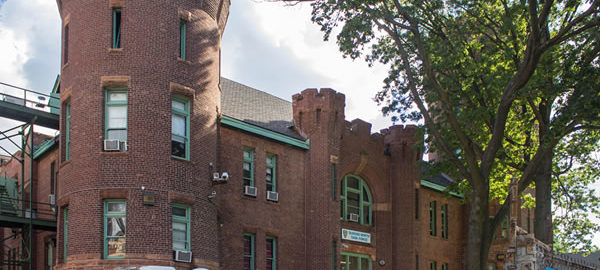
![[Flushing Highlights] IMG_1201 [9/9/2012 3:59:24 PM] [Flushing Highlights] IMG_1201 [9/9/2012 3:59:24 PM]](https://www.newyorkitecture.com/wp-content/gallery/flushing-highlights/img_1201_resize.jpg)
![[Flushing Highlights] K_1205 [9/9/2012 4:00:38 PM] [Flushing Highlights] K_1205 [9/9/2012 4:00:38 PM]](https://www.newyorkitecture.com/wp-content/gallery/flushing-highlights/k_1205_resize.jpg)
![[Flushing Highlights] J_1300 [9/9/2012 4:48:19 PM] [Flushing Highlights] J_1300 [9/9/2012 4:48:19 PM]](https://www.newyorkitecture.com/wp-content/gallery/flushing-highlights/j_1300_resize.jpg)
![[Flushing Highlights] J_1276 [9/9/2012 4:39:52 PM] [Flushing Highlights] J_1276 [9/9/2012 4:39:52 PM]](https://www.newyorkitecture.com/wp-content/gallery/flushing-highlights/j_1276_resize.jpg)
![[Flushing Highlights] IMG_1292 [9/9/2012 4:45:45 PM] [Flushing Highlights] IMG_1292 [9/9/2012 4:45:45 PM]](https://www.newyorkitecture.com/wp-content/gallery/flushing-highlights/img_1292_resize.jpg)
![[Flushing Highlights] IMG_1289 [9/9/2012 4:44:40 PM] [Flushing Highlights] IMG_1289 [9/9/2012 4:44:40 PM]](https://www.newyorkitecture.com/wp-content/gallery/flushing-highlights/img_1289_resize.jpg)
![[Flushing Highlights] IMG_1279 [9/9/2012 4:41:31 PM] [Flushing Highlights] IMG_1279 [9/9/2012 4:41:31 PM]](https://www.newyorkitecture.com/wp-content/gallery/flushing-highlights/img_1279_resize.jpg)
![[Flushing Highlights] IMG_1253 [9/9/2012 4:30:14 PM] [Flushing Highlights] IMG_1253 [9/9/2012 4:30:14 PM]](https://www.newyorkitecture.com/wp-content/gallery/flushing-highlights/img_1253_resize.jpg)
![[Flushing Highlights] IMG_1246 [9/9/2012 4:27:29 PM] [Flushing Highlights] IMG_1246 [9/9/2012 4:27:29 PM]](https://www.newyorkitecture.com/wp-content/gallery/flushing-highlights/img_1246_resize.jpg)
![[Flushing Highlights] IMG_1238 [9/9/2012 4:25:22 PM] [Flushing Highlights] IMG_1238 [9/9/2012 4:25:22 PM]](https://www.newyorkitecture.com/wp-content/gallery/flushing-highlights/img_1238_resize.jpg)
![[Flushing Highlights] IMG_1223 [9/9/2012 4:15:03 PM] [Flushing Highlights] IMG_1223 [9/9/2012 4:15:03 PM]](https://www.newyorkitecture.com/wp-content/gallery/flushing-highlights/img_1223_resize.jpg)
![[Flushing Highlights] IMG_1208 [9/9/2012 4:02:45 PM] [Flushing Highlights] IMG_1208 [9/9/2012 4:02:45 PM]](https://www.newyorkitecture.com/wp-content/gallery/flushing-highlights/img_1208_resize.jpg)
![[Flushing Highlights] IMG_1202 [9/9/2012 3:59:38 PM] [Flushing Highlights] IMG_1202 [9/9/2012 3:59:38 PM]](https://www.newyorkitecture.com/wp-content/gallery/flushing-highlights/img_1202_resize.jpg)
![[Flushing Highlights] IMG_1106 [9/9/2012 2:00:44 PM] [Flushing Highlights] IMG_1106 [9/9/2012 2:00:44 PM]](https://www.newyorkitecture.com/wp-content/gallery/flushing-highlights/img_1106_resize.jpg)
![[Flushing Highlights] IMG_1199 [9/9/2012 3:58:08 PM] [Flushing Highlights] IMG_1199 [9/9/2012 3:58:08 PM]](https://www.newyorkitecture.com/wp-content/gallery/flushing-highlights/img_1199_resize.jpg)
![[Flushing Highlights] IMG_1183 [9/9/2012 3:50:53 PM] [Flushing Highlights] IMG_1183 [9/9/2012 3:50:53 PM]](https://www.newyorkitecture.com/wp-content/gallery/flushing-highlights/img_1183_resize.jpg)
![[Flushing Highlights] IMG_1176 [9/9/2012 3:48:32 PM] [Flushing Highlights] IMG_1176 [9/9/2012 3:48:32 PM]](https://www.newyorkitecture.com/wp-content/gallery/flushing-highlights/img_1176_resize.jpg)
![[Flushing Highlights] IMG_1166 [9/9/2012 3:45:34 PM] [Flushing Highlights] IMG_1166 [9/9/2012 3:45:34 PM]](https://www.newyorkitecture.com/wp-content/gallery/flushing-highlights/img_1166_resize.jpg)
![[Flushing Highlights] IMG_1158 [9/9/2012 3:43:03 PM] [Flushing Highlights] IMG_1158 [9/9/2012 3:43:03 PM]](https://www.newyorkitecture.com/wp-content/gallery/flushing-highlights/img_1158_resize.jpg)
![[Flushing Highlights] IMG_1157 [9/9/2012 3:42:45 PM] [Flushing Highlights] IMG_1157 [9/9/2012 3:42:45 PM]](https://www.newyorkitecture.com/wp-content/gallery/flushing-highlights/img_1157_resize.jpg)
![[Flushing Highlights] IMG_1134 [9/9/2012 2:14:50 PM] [Flushing Highlights] IMG_1134 [9/9/2012 2:14:50 PM]](https://www.newyorkitecture.com/wp-content/gallery/flushing-highlights/img_1134_resize.jpg)
![[Flushing Highlights] IMG_1130 [9/9/2012 2:13:18 PM] [Flushing Highlights] IMG_1130 [9/9/2012 2:13:18 PM]](https://www.newyorkitecture.com/wp-content/gallery/flushing-highlights/img_1130_resize.jpg)
![[Flushing Highlights] IMG_1115 [9/9/2012 2:03:59 PM] [Flushing Highlights] IMG_1115 [9/9/2012 2:03:59 PM]](https://www.newyorkitecture.com/wp-content/gallery/flushing-highlights/img_1115_resize.jpg)
![[Flushing Highlights] IMG_1111 [9/9/2012 2:02:04 PM] [Flushing Highlights] IMG_1111 [9/9/2012 2:02:04 PM]](https://www.newyorkitecture.com/wp-content/gallery/flushing-highlights/img_1111_resize.jpg)
![[Flushing Highlights] IMG_1109 [9/9/2012 2:01:15 PM] [Flushing Highlights] IMG_1109 [9/9/2012 2:01:15 PM]](https://www.newyorkitecture.com/wp-content/gallery/flushing-highlights/img_1109_resize.jpg)
![[Flushing Highlights] IMG_1223 [9/9/2012 4:15:03 PM]](https://www.newyorkitecture.com/wp-content/uploads/2012/09/IMG_1223_resize-220x220.jpg)








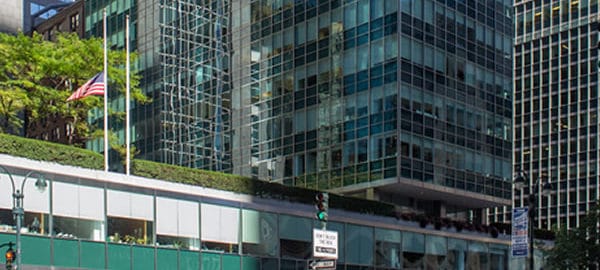

![[Lever House] IMG_1911 [9/11/2012 10:29:32 AM] [Lever House] IMG_1911 [9/11/2012 10:29:32 AM]](https://www.newyorkitecture.com/wp-content/gallery/lever-house/IMG_1911_resize.jpg)
![[Lever House] IMG_1915 [9/11/2012 10:30:53 AM] [Lever House] IMG_1915 [9/11/2012 10:30:53 AM]](https://www.newyorkitecture.com/wp-content/gallery/lever-house/IMG_1915_resize.jpg)
![[Lever House] IMG_1917 [9/11/2012 10:31:44 AM] [Lever House] IMG_1917 [9/11/2012 10:31:44 AM]](https://www.newyorkitecture.com/wp-content/gallery/lever-house/IMG_1917_resize.jpg)
![[Lever House] IMG_1961 [9/12/2012 1:25:55 PM] [Lever House] IMG_1961 [9/12/2012 1:25:55 PM]](https://www.newyorkitecture.com/wp-content/gallery/lever-house/IMG_1961_resize.jpg)
![[Lever House] IMG_2788 [9/26/2012 8:18:18 PM] [Lever House] IMG_2788 [9/26/2012 8:18:18 PM]](https://www.newyorkitecture.com/wp-content/gallery/lever-house/IMG_2788_resize.jpg)
![[Lever House] IMG_2790 [9/26/2012 8:20:56 PM] [Lever House] IMG_2790 [9/26/2012 8:20:56 PM]](https://www.newyorkitecture.com/wp-content/gallery/lever-house/IMG_2790_resize.jpg)
You must be logged in to post a comment.